Your first trip to Japan 🇯🇵
Personal selection of information, places to see, things to eat and experiences to have during your first trip to Japan.

Introduction
I get asked regularly for advice from family, friends and colleagues (hello Ricky!) going soon on their first trip to Japan. While there exists a lot of guides, blog articles and "Top rankings" on the internet, I wanted to make my own selection and present it in my own way. It is by no means an exhaustive list of things you can experience in Japan, nor a plan you should strictly follow. I hope that this selection of information will help you plan your trip and I look forward to your feedback and comments !
When to go?
If you can, you should really avoid the hot and humid Japanese summer, and aim for either spring (especially during the cherry blossom season end March / start of April) or autumn (where the trees get their colorful leaves called koyo, between end September and start December depending on the region). If you're a fan of winter sports, by all means go during that season and enjoy either the Japanese alps or Hokkaido !

You may also want to check when some festivals or events (like the four annual Sumo Tournaments) are taking place, to fine tune your planning.
Budget
Although Japan's 60th rank in the 2023 edition of The Economist's Worldwide Cost of Living study[1] makes it appear much cheaper than France (Paris - 7th), Denmark (Copenhagen - 8th), or the USA (New York - 3rd), it is still the world's third biggest economy, and an expensive country to travel to. In my experience, it depends on the type of expenses. Transport and hotel nights can be a big cost item, while food may me more accessible. Even within certain categories, things can vary: a lunch in a restaurant can actually be really affordable, while dinners will cost more, and fruits are extremely expensive.
Orders of magnitude
Per person:
| Cost item | Price in JPY (¥) | i.e. in EUR (@130JPY/EUR) |
|---|---|---|
| Meals | 1000 (lunch) to 2-4000 (dinner) | 8~30 |
| Entrance to some temples | 200-500 | 1.5~4 |
| Shinkansen Tokyo-Kyoto (one-way)[2] | 13,080 (non-reserved) to 18,690 (reserved Green Car seat i.e. 1st class) | 100~145 |
| Tokyo Metro (1 regular ticket)[3] | 180 (1-6km) to 390 (28-40km) | 1.5~3.0 |
| Hotel night | 10,000 | 77 |
| Taxi[4] | Roppongi -> Shibuya 3.6km 1,210 yen; Asakusa -> Shinagawa 13.3km 4,170 yen | 9~32 |
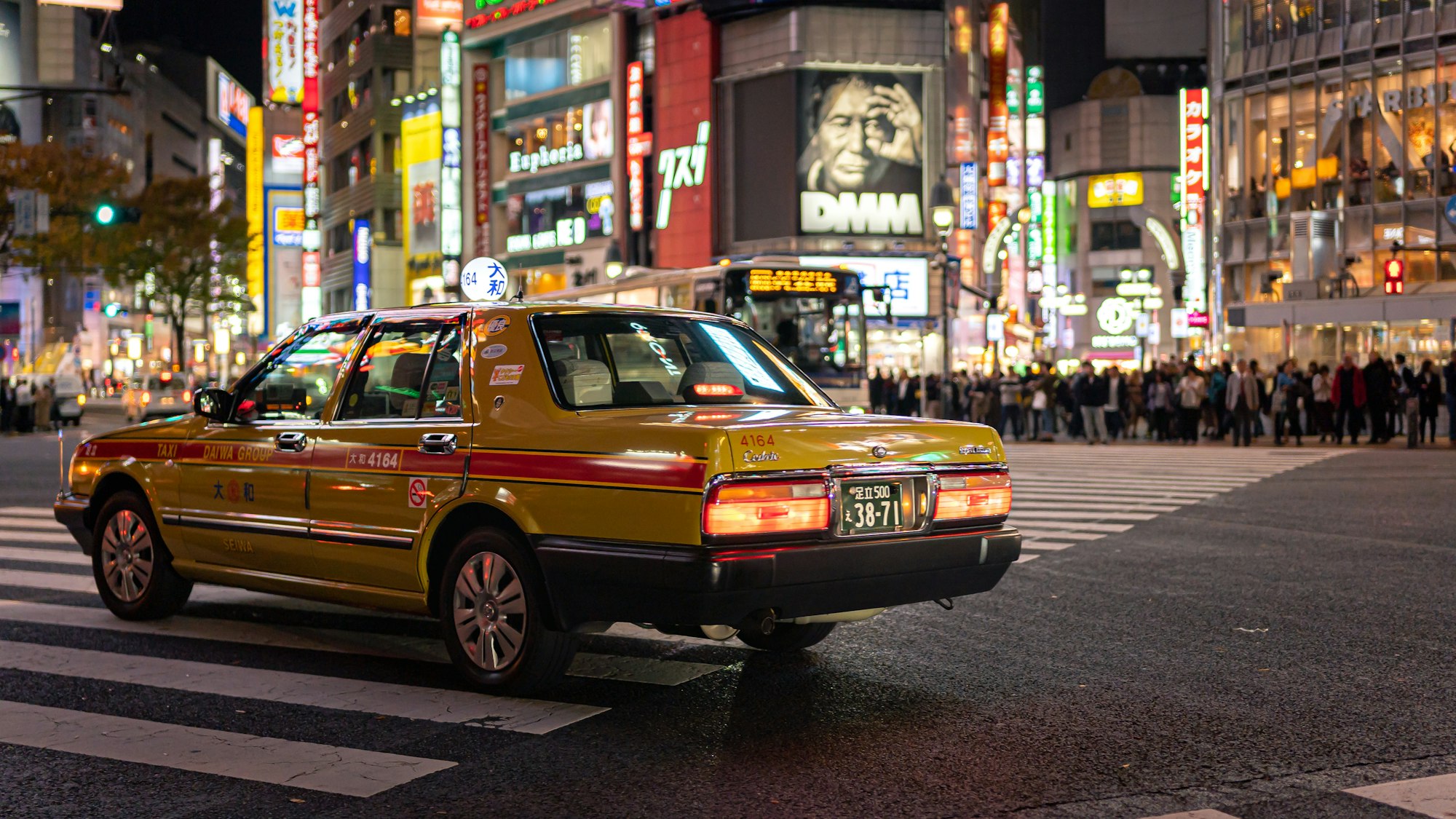
Currency
The Japanese Yen has fluctuated a lot over the years[5], with a typical reference being 130JPY/EUR, a lower bound at 110JPY/EUR, and an upper bound at 155JPY/EUR where it is currently with the current geopolitics and world economy situation. Check it before going, it makes a lot of difference on your budget :)
Practical
Japan Rail Pass
Given the above, unless you intend to stay the whole time in the city your destination airport is attached to, it is a great idea to buy a Japan Rail Pass. Available in two different categories (corresponding to 2nd class or 1st class), and three different durations (1, 2 and 3 weeks), this pass enables you to travel unlimited on all lines operated by JR (national train company).
You can check out all the details on their official website, but here are some of the most important points:
- Eligibility: all foreign citizens, or Japanese citizens who can provide proof that they have lived 10 years or more in the foreign country where they live.
- Price: for instance 29,650 JPY (228 EUR) for an Adult Ordinary pass for 1 week. Given the above, you would already be on part just by taking the Shinkansen back and forth to Kyoto.
- Where to buy the pass? You can buy a Japan Rail Pass in Japan, but it is a good idea to plan in advance and by an Exchange Order at one of the JR designated sales offices or agents. This would make you save 10-15% on the price. In France, these are mostly in Paris, but there's one in Nice, Toulouse and in the suburbs of La Rochelle. In Denmark, there are only two, in Copenhagen.
- Does not work with the Nozomi and Mizuho services of shinkansen, even without seat reservation. These are the fastest ones, and also the coolest looking :) but they are plenty of other shinkansens, which wouldn't feel slower at all. The next fastest are the Hikari.
- Does not work in the Tokyo Metro lines. You would have to pay extra for that.
- JR also operates a number of intra-city train lines in which you can also use the pass. You will most likely use it several times for instance in Tokyo (Yamanote line circling around the center, Chuo line crossing the city east-west)
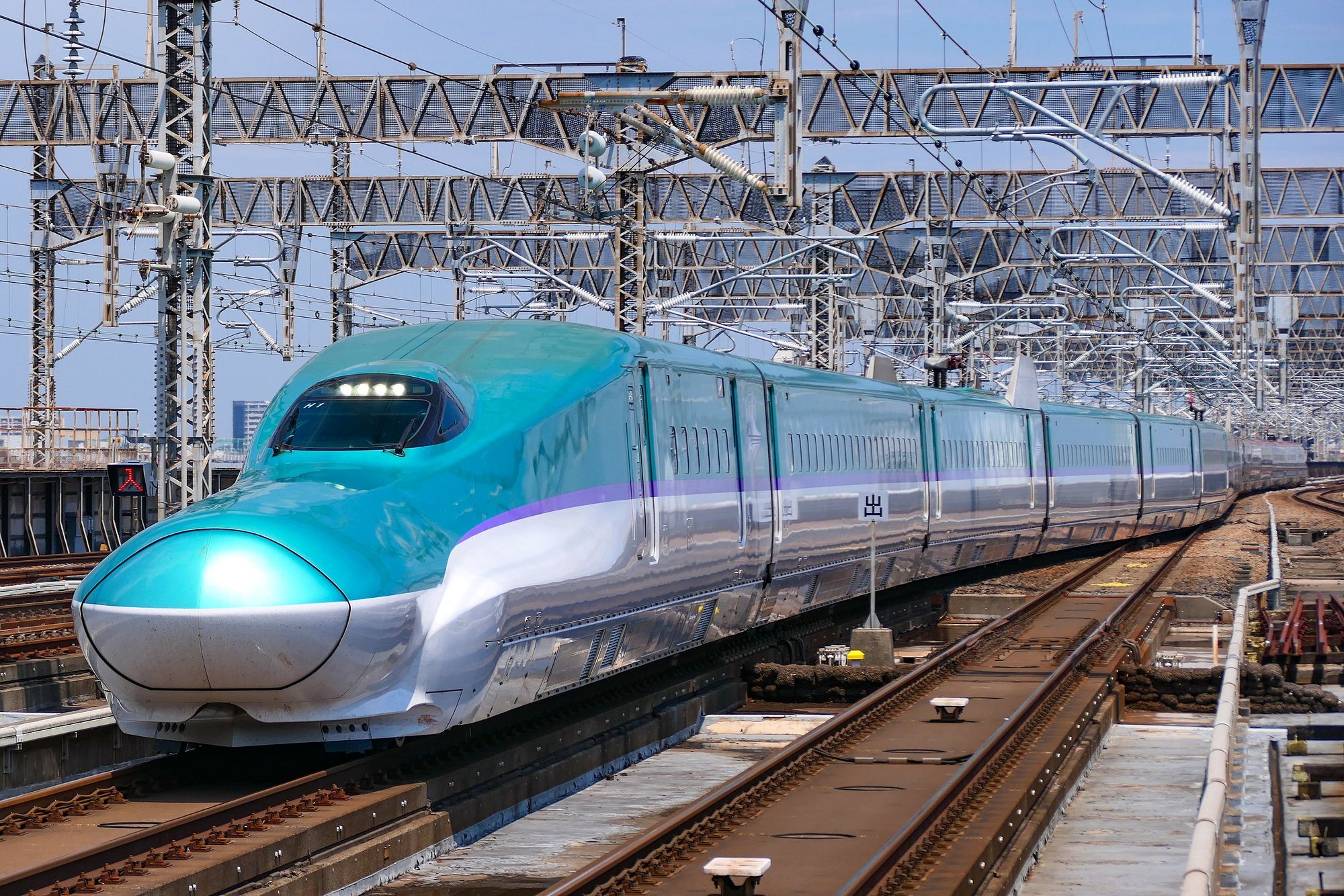
Alternative: Seishun 18 Kippu
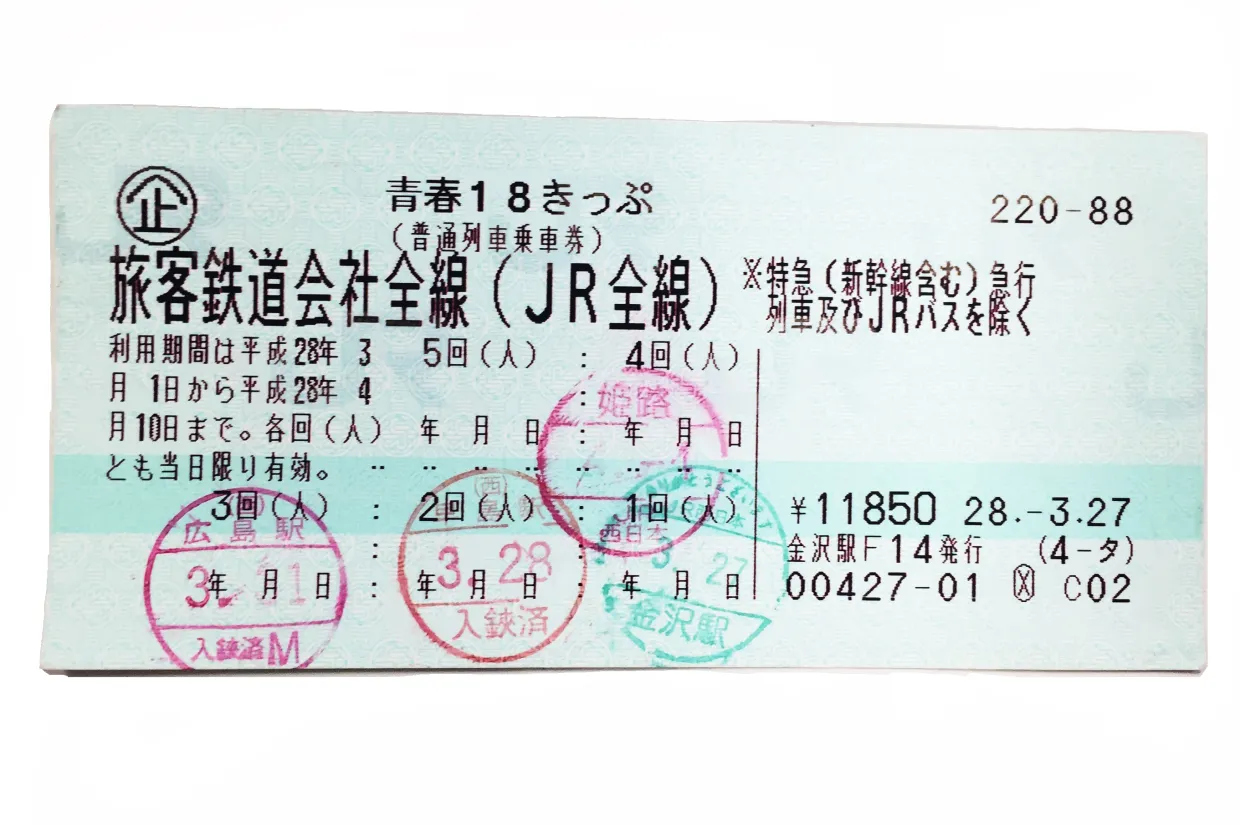
A slower but cheaper alternative is the Seishun 18 Kippu or "Youth 18 Ticket", which can be used by anyone regardless of age contrary to what its name suggests.
It is a non-personal, transferrable ticket for 5 person-days, only sold during three specific periods of the year, and can only be used on local trains (普通・futsuudensha, or 各駅・kakuekiteisha) and rapid trains (快速・kaisokuteisha). So not on Shinkansen.
If you're not in a rush, on a tight budget, or if you're interested in having a trip slightly off-the-beaten-track, read the details here.
Two-week circuit
There are many opinions out there as to what the most optimal circuit for a first trip to Japan. The best one will be the one you'll choose. And spoiler alert: it won't be enough. You will want to come back and experience more ! That being said, I feel that for a good two first weeks in Japan, a circuit covering an area from Tokyo in the North to Hiroshima in the South, is a good one. It can be called classic for a reason: it is a solid one. Feel free to add or replace some items with what you'll find in the rest of the article.
- 2 full days in Tokyo
- 2 days, 1 night in Hakone or around Mount Fuji
- 3 full days in Kyoto
- 1 day in Nara
- 1 day in Osaka
- 1 day in Hiroshima
- 1 day in Miyajima
- 2 day travelling back to Tokyo, last-minute shopping, and last experiences
Selection from Tokyo to Hiroshima
1. Tokyo
Asakusa - Kappabashi

Asakusa is famous for its buddhist temple Sensoo-ji dedicated to the bodhisattva Kannon, its pagoda, and its shopping street. It is a beautiful place, where you will be able to have a proper temple experience, and buy good food or traditional souvenirs.
No so far from it, Kappabashi Street is the place-to-go if you want to find something cooking related, as it is full of stores selling everything needed by restaurant operators except food. You will find specialized stores for knives, utensils, pans and pots, plates, signs and lanters, or ... the fake dishes made of wax that you can see in all the restaurant fronts.
If you like views from high up, a few hundreds meters or 1 metro station away is the Tokyo Skytree, a 634m-high telecommunication tower with a shopping mall and 2 observation decks at 350 and 450m.
Harajuku - Omotesando
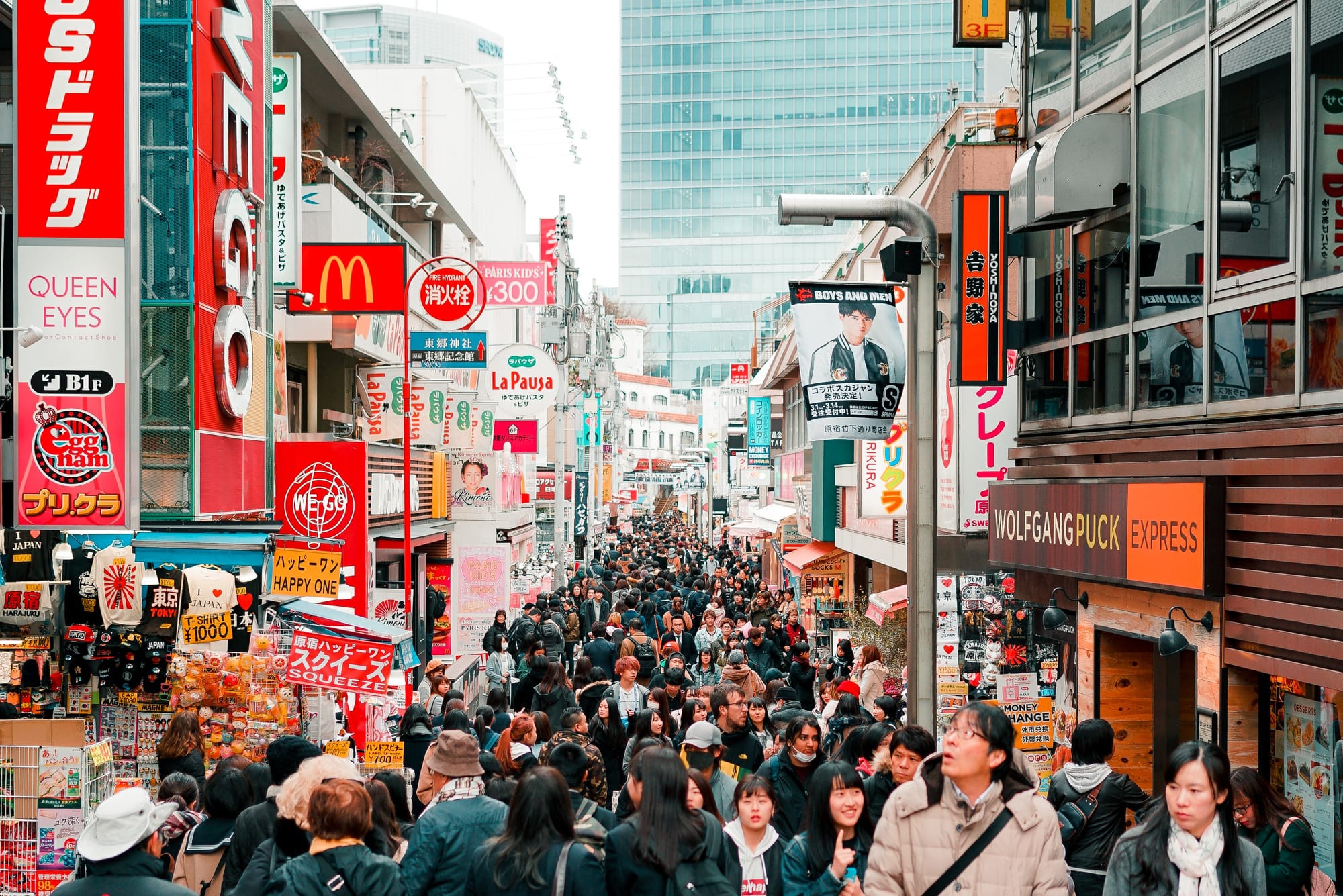
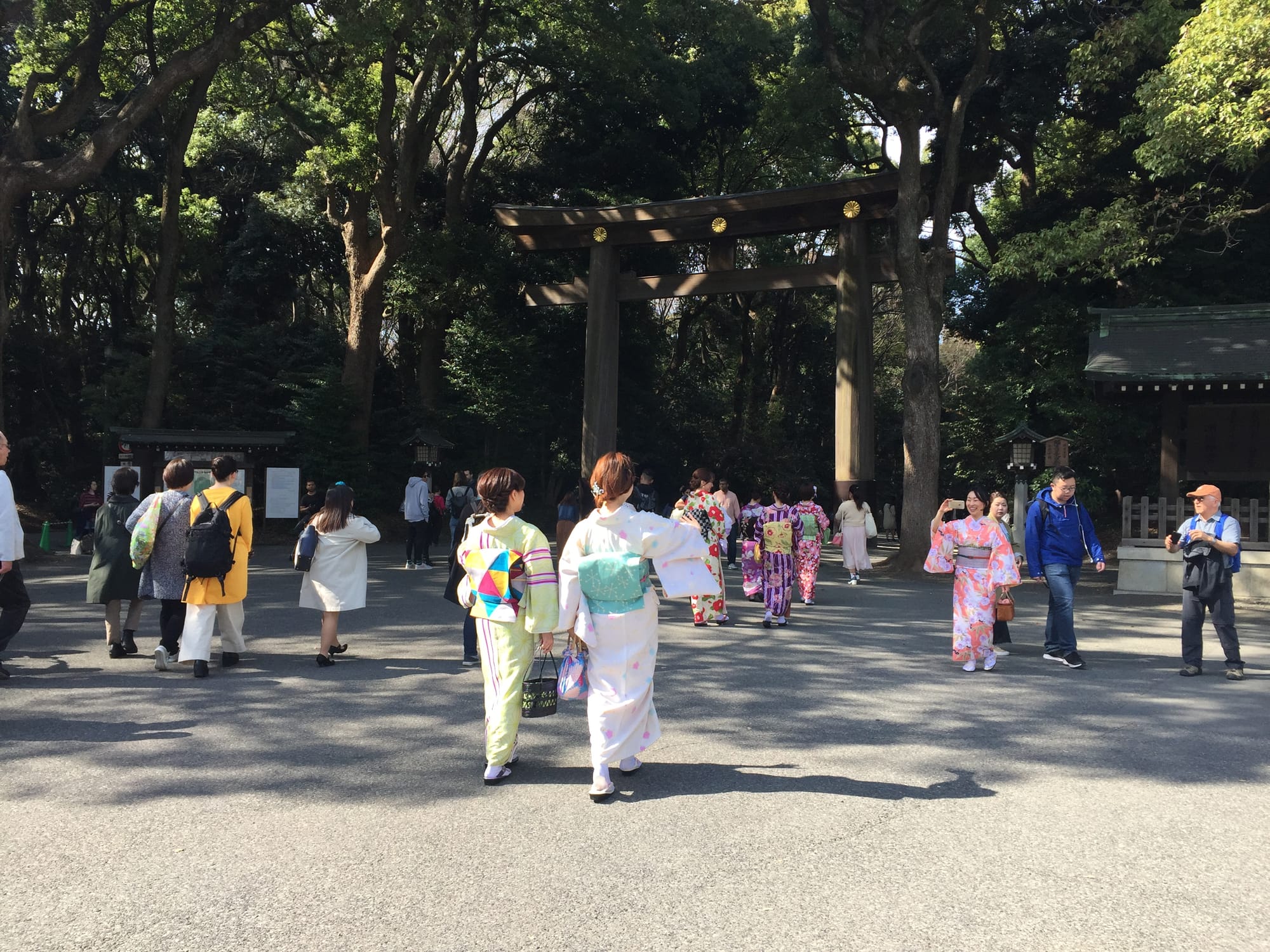
Credits: Takeshita Street (left) by Elton Sa for Unsplash; Meiji Jingu Gyoen entrance (right) by tmlmt
Harajuku and Omotesando are famous for their shopping experience of opposite styles: Takeshita Street in Harajuku is the iconic youth shopping street with crazy outfits of all sorts, sweet Japanese crepes and cafes along the way; Omotesando has a long line-up of stores of luxury brands. Streets in between will be full of clothing stores of all types.
On certain days, the tiny bridge right next to Harajuku Station will see gatherings of groups of people dressed in a very exhuberant way. The bridge leads to the Meiji Jingu Park, where again the contrast is striking between ladies dressed in yukatas and casually dressed locals or tourists visiting the beautiful Meiji Jingu Shrine.
Shibuya
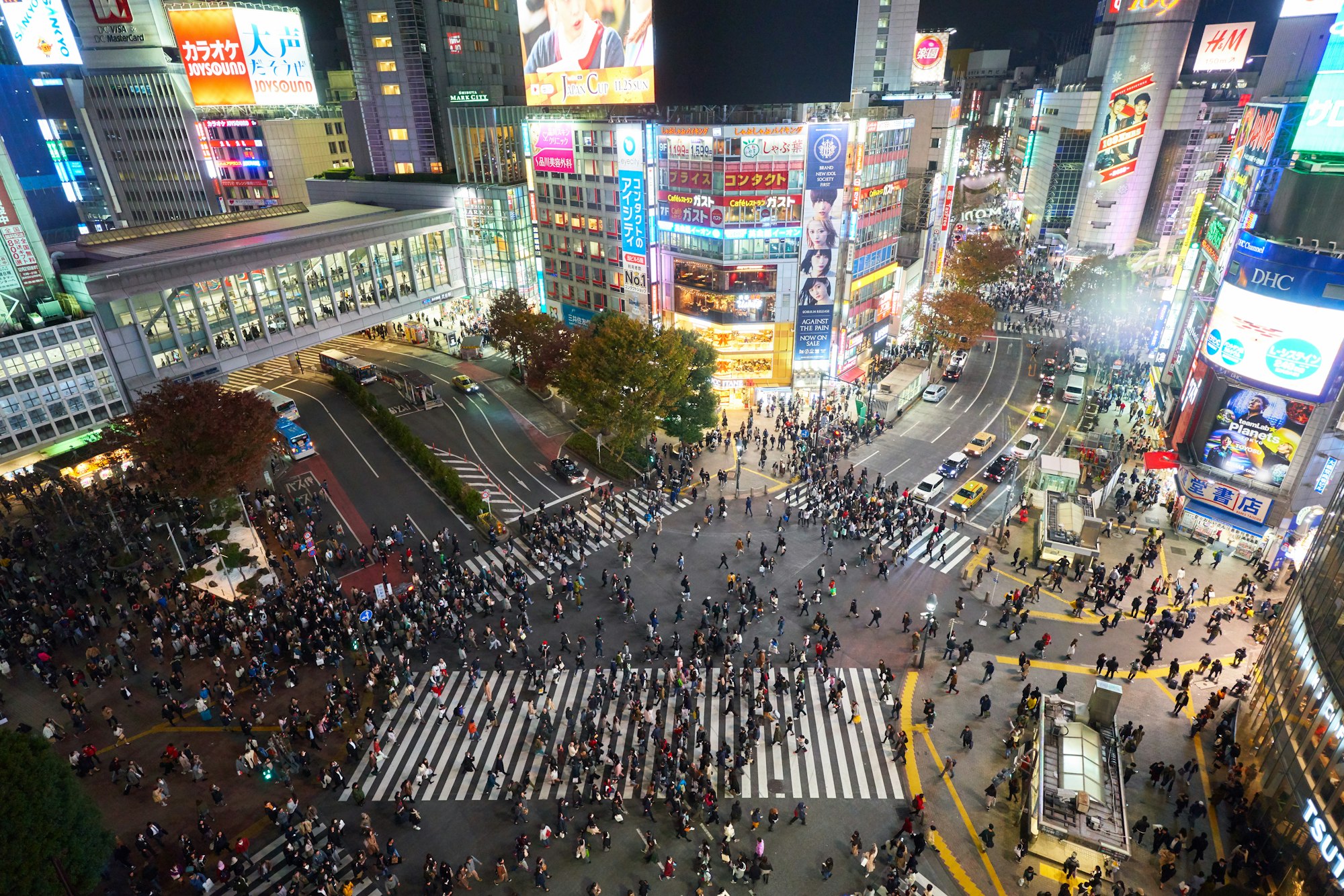
Shibuya is the most popular places for going out in Tokyo. It is full of shopping places, restaurants, karaoke venues, and there are a few clubs. The most striking sight is the famous Shibuya Crossing which gets overly crowded when signals turn green for pedestrian to cross the intersection on all directions.
Shinjuku - Golden Gai
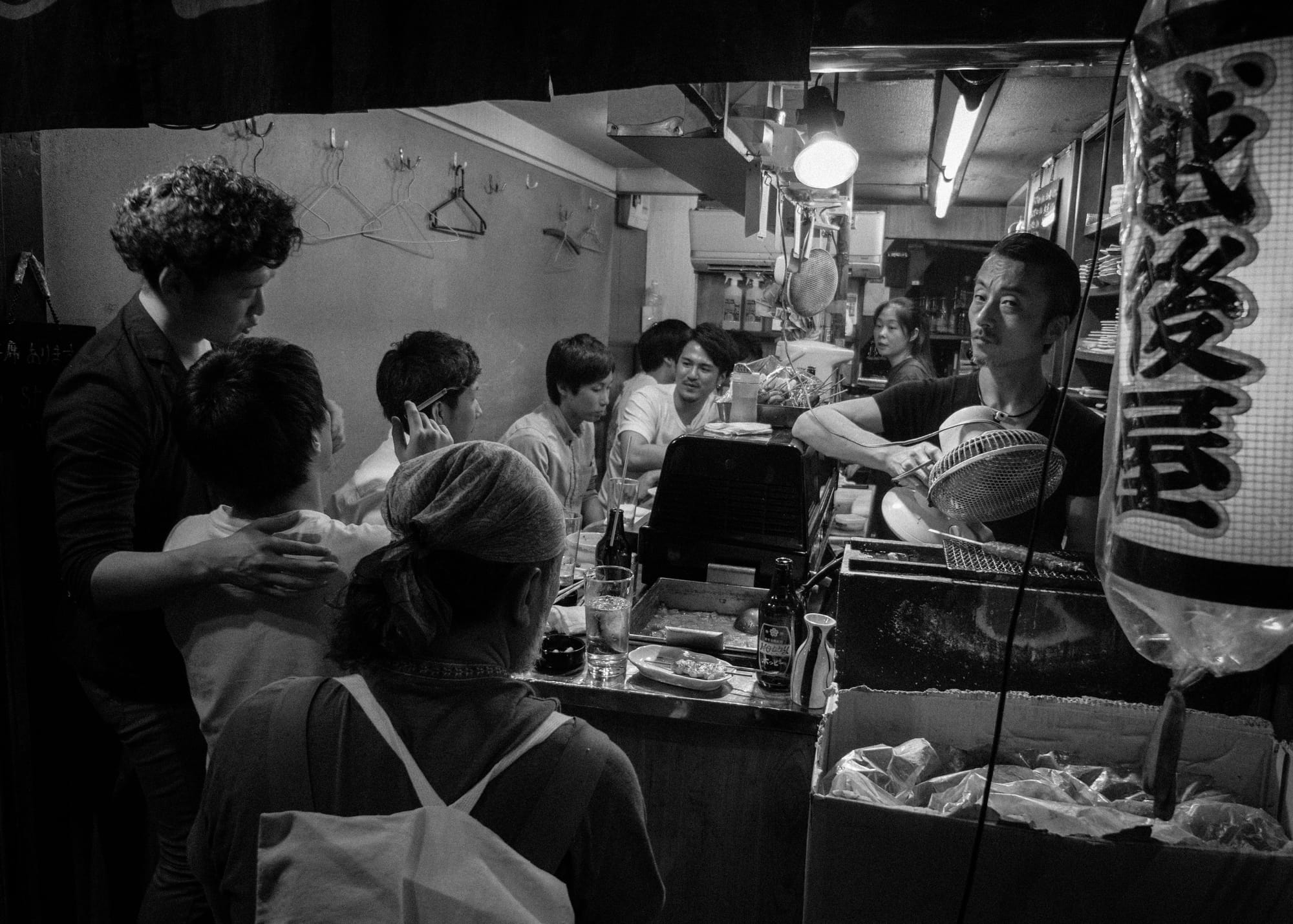

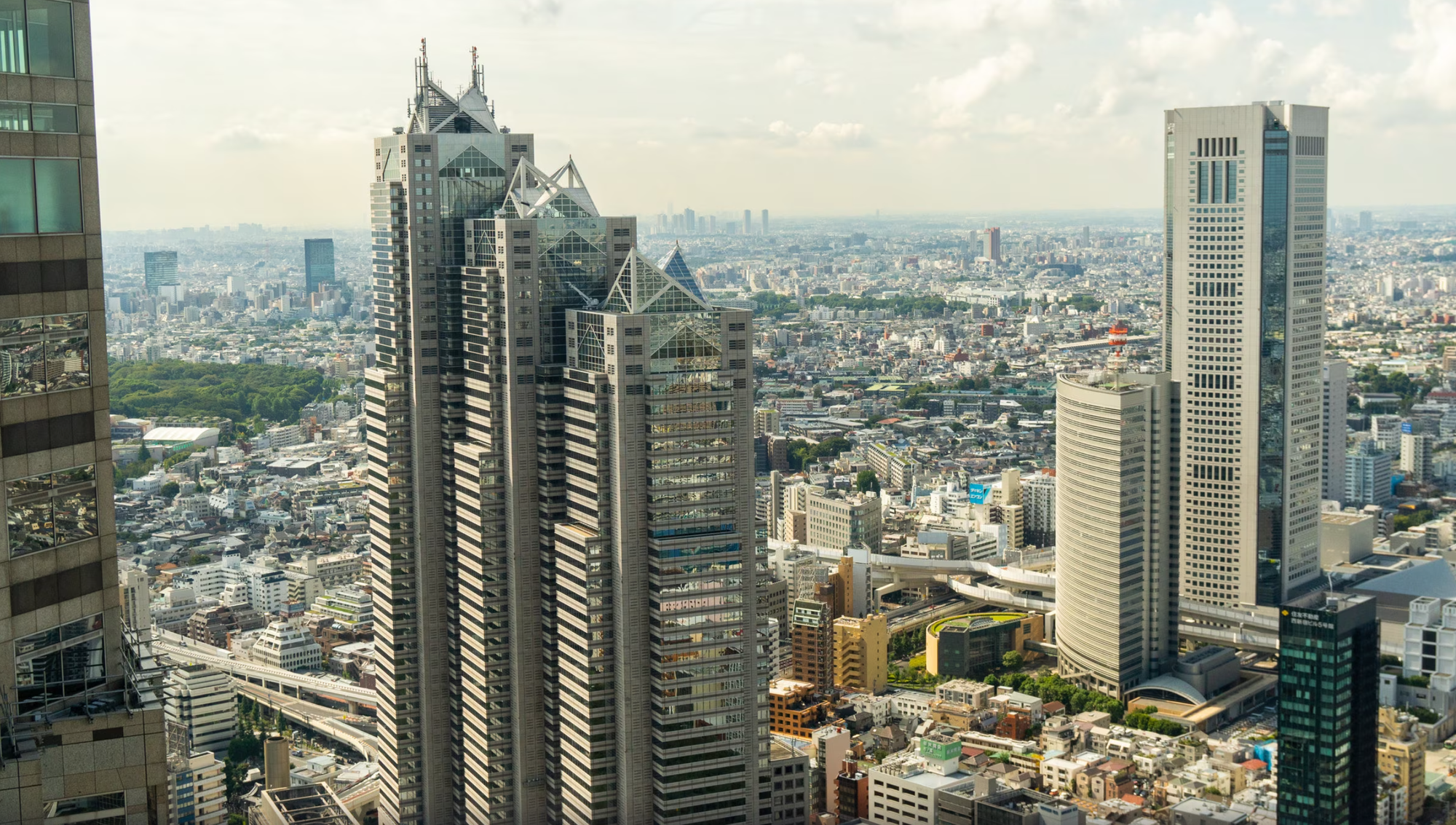
Credits: Golden Gai (left) by Max Anderson on Unsplash; Hotel Sara Sweet (Kinshicho, middle); Nishi-Shinjuku (right), Expedia
Shinjuku at first sight is a business district, and that's indeed what it partly is on the west side: a major administrative and commercial district, with many company headquarters (NTT East, Seiko Epson, Olympus, ...). Shinjuku station is by far the busiest transport hub in the world, with several million people transiting through it every day. It can be impressive just to go there, exit on the Nishi-Shinjuku side and admire the view of go shopping into one of the big stores (e.g. Tokyu Hands).
On the other side though, lies Kabukichoo, the Entertainment District, which is a world in itself. It has tons of restaurants and bars, such as the famous tiny izakayas of Golden Gai, and is one of the places you can find love hotels if you want to try out. It has a rather unique vibe, and was pictured in a lot of mafia movies.
Akihabara

Nicknamed "Electric Town", Akihabara is the place to go to experience Japan's most vibrant consumer electronics market. The neighborhood is especially striking at night, when all the lights and colorful ads covering most buildings are lit up. What can you find there?
- Multiple-storey buildings selling all sorts of electronic products from rice cookers to cameras and laptops. A paradise for tech-savvy people. Note that:
- Things are not necessarily (that much) cheaper than in your homecountry. Check online at which price you can get the same model back home. It may actually be a bargain given how strong the Yen is at the time of your visit.
- The Japanese electricity system is running on 110V with special plugs. Check whether the product is sold with multiple plugs and is rated for the full range 110-240V. Consider either going to stores that only sell devices for overseas customers (they are rather well indicated), or buying the local version and then a voltage transformer or a different charger when you've returned home
- You can get tax deducted from your purchase, by showing your passport at the cashier.
- Small streets with tiny shops super specialized into all kinds of electronic components. Akihabara used to be the booming heart of post-WWII reconstruction and modernism in Japan.
- Arcade game venues, where you will be able to play all kinds of solo or multi-player games.
- Maid cafes, which despite being super disturbing, are cute and fun places to take a break with a coffee.
Tsukiji
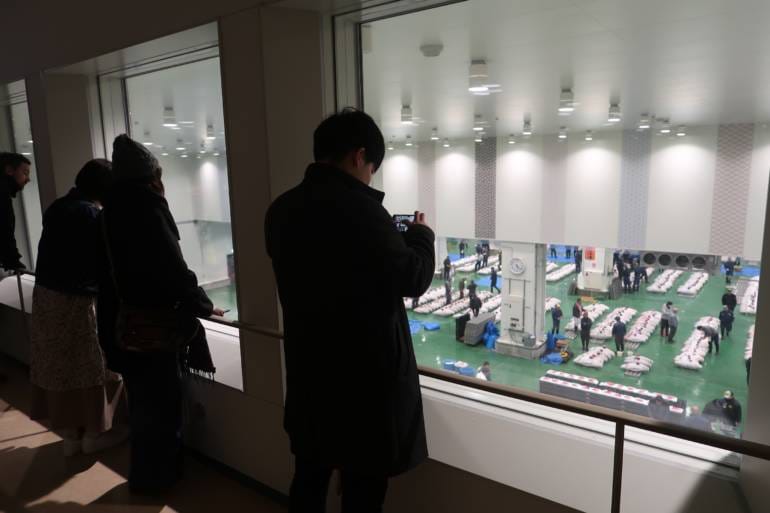
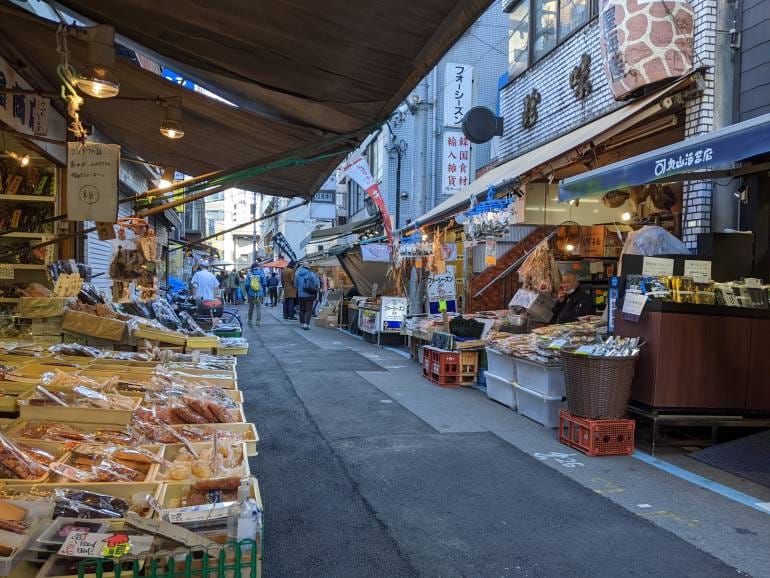
Credits: Toyosu Fish Market (left) by Mareike Dornheige for Tokyo Cheapo; Tsukiji Outer Market by Maria Danuco for Tokyo Cheapo
Tsukiji used to be the most famous fish market in the world, and it probably still is to a large extent. From 1935 to 2018, it was famous for holding impressive red tuna auctions early in the mornings that tourists could experience first hand by standing right by the professionals. In 2018, the wholesale professional market was transferred 3 km South to Toyosu, while the unofficial network of shops and restaurants that had developed around the interior wholesale market of Tsukiji remained. Today, it is thus possible to experience both, in a certain way:
- The Tsukiji Outer Market (Tsukiji Uogashi) still has a vibrant activity level all days, in particular during the opening times of most shops from 5 am to 2 pm. You can go there and eat delicious, fresh fish.
- The Toyosu Fish Market is the new site for professionals. The tuna auction can still be experienced (the area and experience is clearly marked and guided when you arrive on site) but from further away and behind window glasses. You will not be able to go down to the professional floors. Many restaurants available at the end of the tour.
Can be considered, but can also be missed
- Ginza - a shopping area with many international and luxury brands. 8-story Uniqlo
- Yanaka Ginza - not to be confused with the one above, it's a neighborhood near Nippori Station which has kept its old authentic vibe. Feel free to add it to your day tour if you plan to be nearby.
- Imperial Palace - not the most impressive, but nice place and nice walking tour around
- Tokyo Dome. You might be lucky that a good concert or baseball game is playing during your stay. Or you may want to go if you’re into roller coasters. Otherwise, you can skip it.
- Tokyo Tower 🗼. Unless you’re staying close by and you haven’t been to the Eiffel Tower in Paris, you can probably skip it.
Selection of Parks in Tokyo

Some of my favorite parks:
- Hamarikyu (very close to Tsukiji). I like this park which has a very calm atmosphere and yet full of vegetation and tea break possibilities. Looks like a mini Central Park.
- Meiji Jingu Gyoen (see paragraph about Harajuku - Omotesando)
- Yoyogi Koen (right next to Meiji Jingu Gyoen). A large park where some hanami picnics under cherry trees are very popular and fun.
2. Kamakura
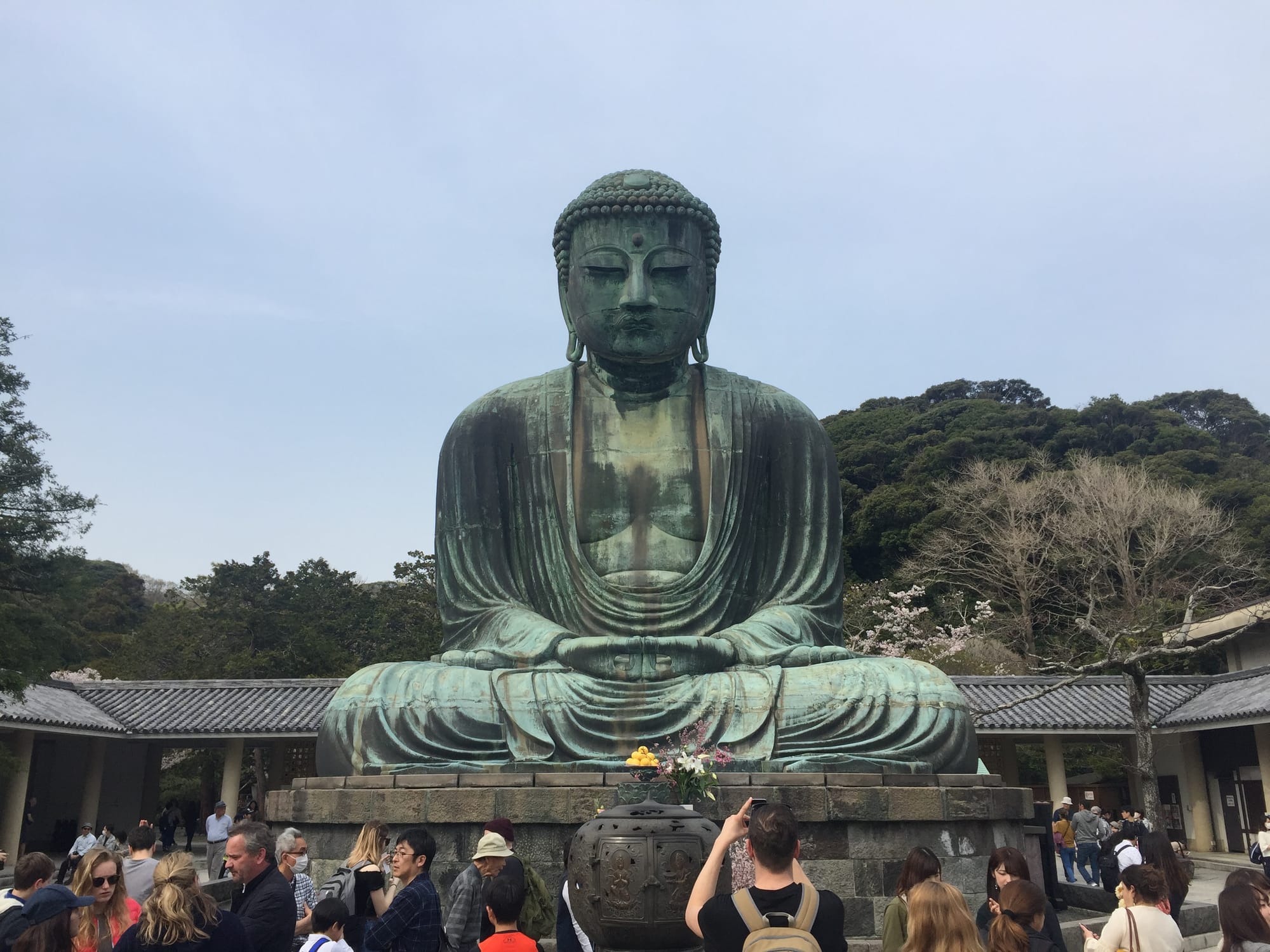
Along with the Great Buddha of the Todaiji temple in Nara, the Great Buddha of Kamakura is one of the largest bronze statues of Buddha. It is a famous attraction in the Kanto region (the region of Tokyo) and is a good idea for a day trip from Tokyo.
3. On and around Mt Fuji
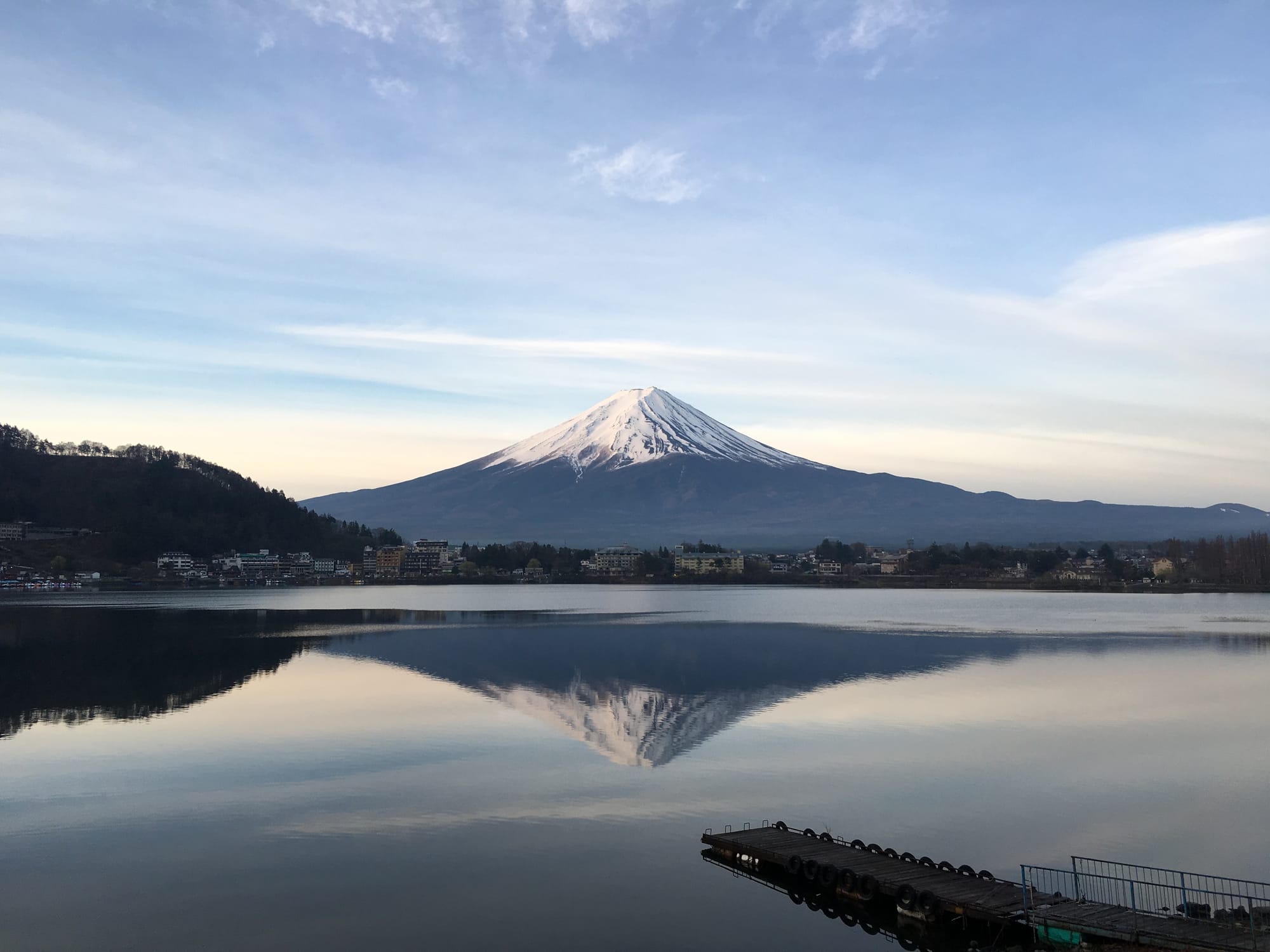
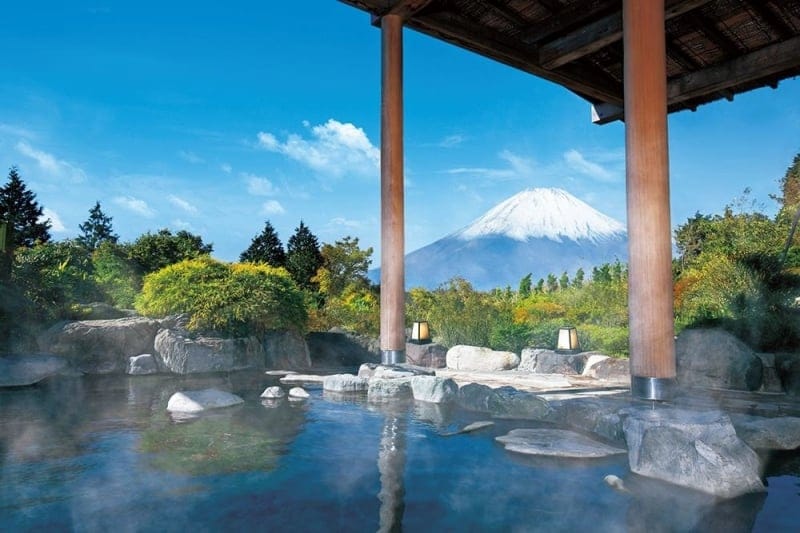
Credits: Mount Fuji (left) by Tommy Silver on Unsplash; Hakone Green Plaza Hotel (right): Welcome to Tokyo, Keikyu Bus
Climbing the Mount Fuji is of course very symbolic given the importance of that volcano for the Japanese people. Note that this is only possible during a short season of a bit more than two summer months. It is a very popular activity, so it is highly recommended to plan your trip during weekdays and to avoid holidays like the Obon period / Golden Week mi-August.
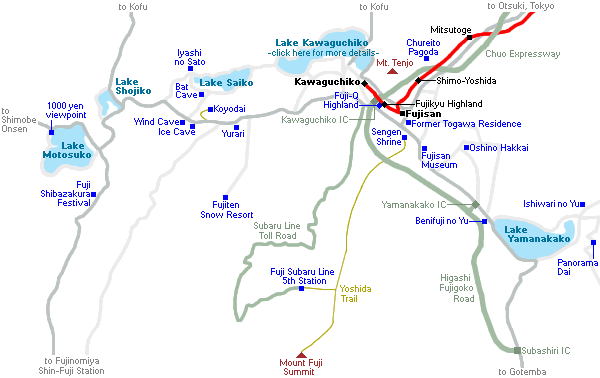
The region is also very well known for the five lakes that surround Mount Fuji. For instance, Lake Kawaguchiko, the most developed of them, has many ryokan (traditional hotels) where you can enjoy a nice and calm retreat far from the bustling capital.
If you don't want to come that close but still want to enjoy a view of Mount Fuji, a trip to Hakone can be recommended. Its lake, its view and the many national hot-spring facilities (onsen) in its territory, makes it a popular destination among the Japanese and international tourists for a break out of Tokyo.
4. Kyoto
Kyoto is the Japanese capital of culture. Its collection of temples and historical places is absolutely stunning and is a must for any first trip to Japan.
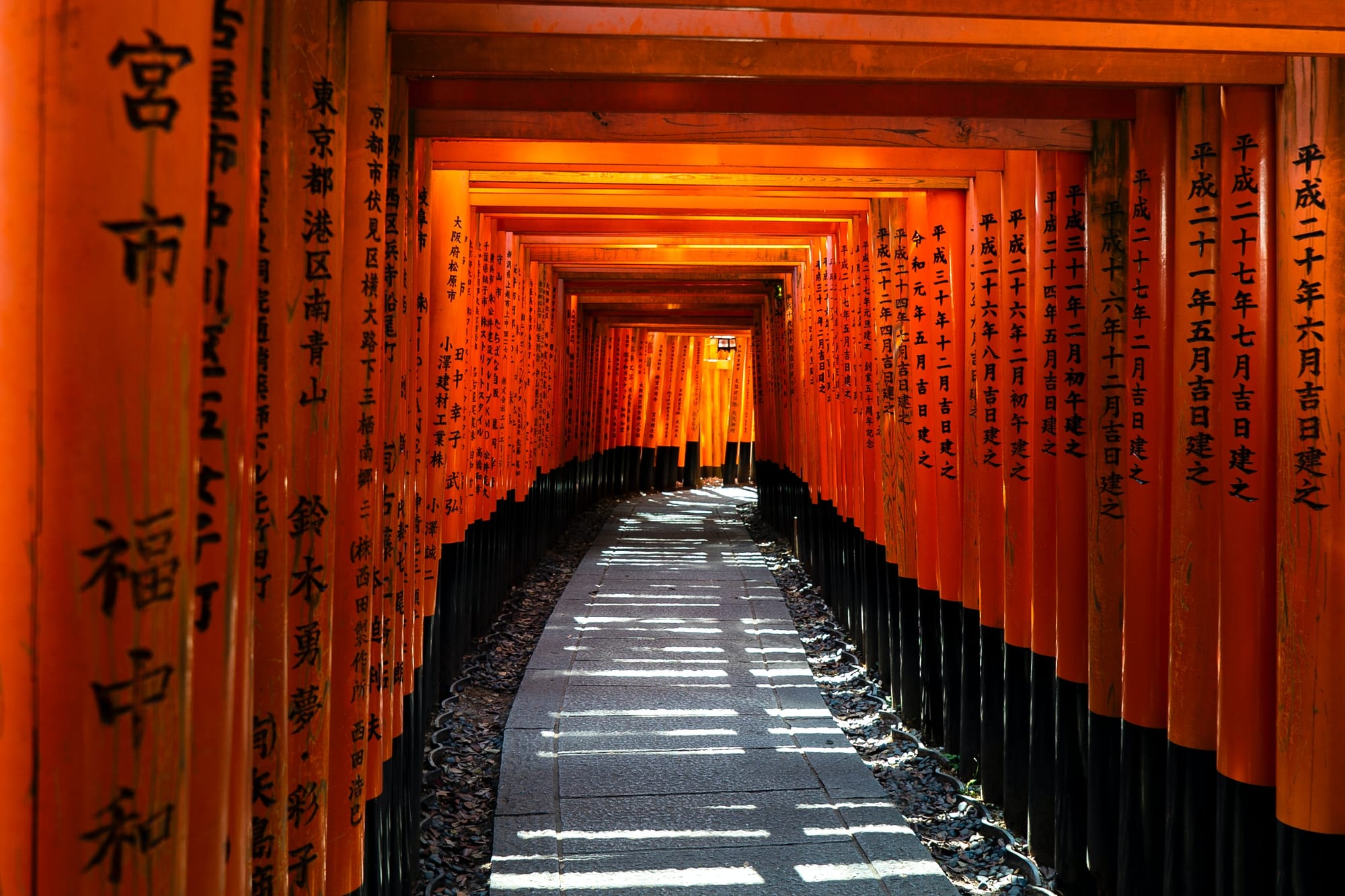
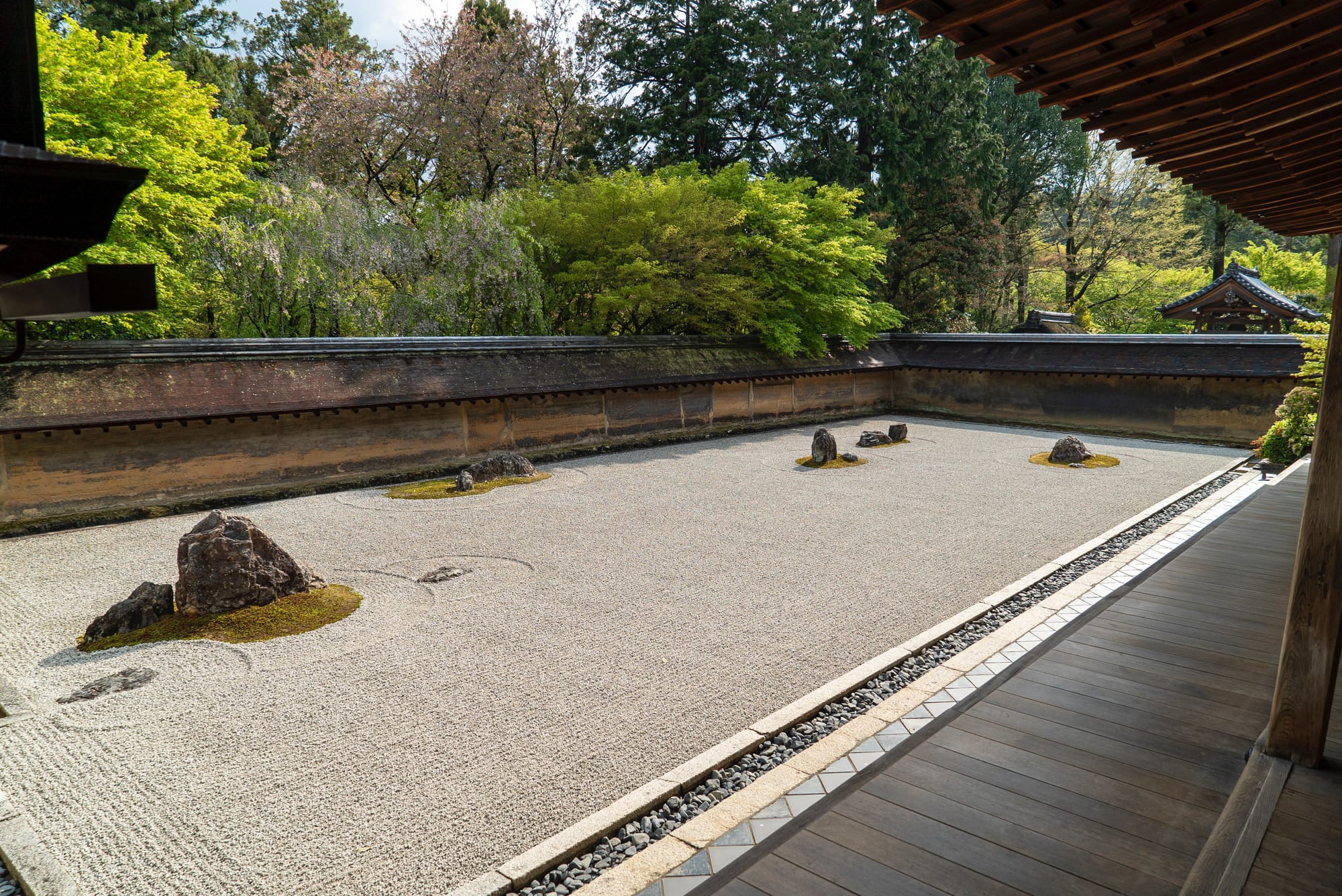
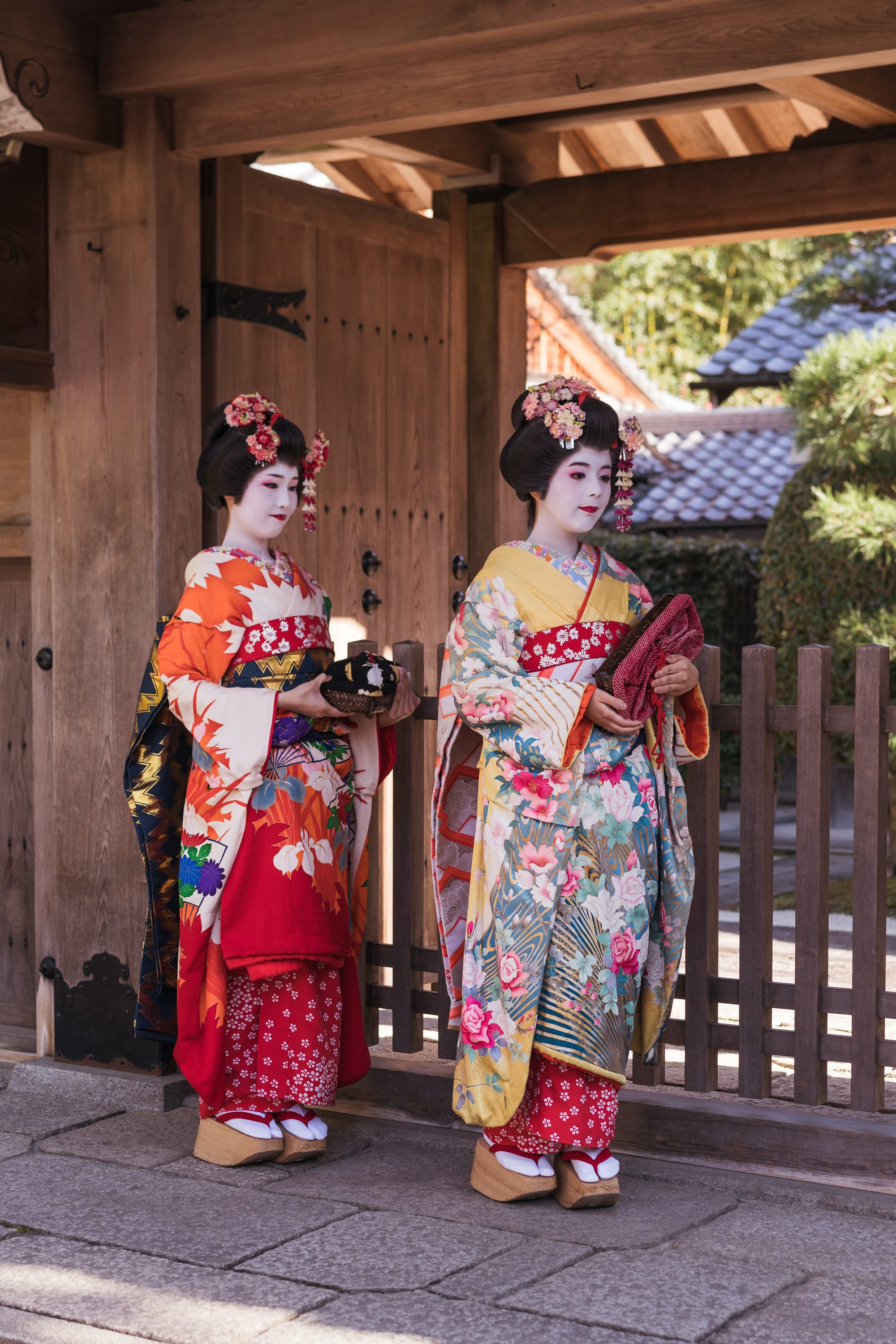
Credits: Fushimi Inari-taisha (left) and Ryoan-ji (middle) by David Emrich on Unsplash. Geisha (right) by Naveen Kumar on Unsplash
As an inspiration, you can consider spending four days in total, each day focusing on a city quadrant:
- North-West: the famous Kinkakuji (Golden Pavilion), Ryoan-ji (my favorite zen garden) and the Arashiyama Bamboo Forest further to the West
- North-East: Ginkakuji (Silver Pavilion, even better garden the kinkakuji), the Philosophers' Path, and Nanzen-Ji
- South-East: Fushimi Inari-taisha (thousands of red portals in forest), Kodai-ji and its gardens, and the Sannenzaka slope leading to the famous Kiyomizu-dera
- The rest: there's a plethora of things to see, eat and try. You can go to the Gion District to see some geishas, visit the Nijojo Castle in the center, try some local food or a tradional meal (Kaiseki Ryori).
One unique thing you can do is to spend a night in a temple. This is possible in some of them: you take a bath in a traditional bathroon, sleep in a tatami room, and enjoy a very traditional breakfast at 7am. Do not expect luxury and warmth, but a soothing peace and humbling tradition.
5. Nara
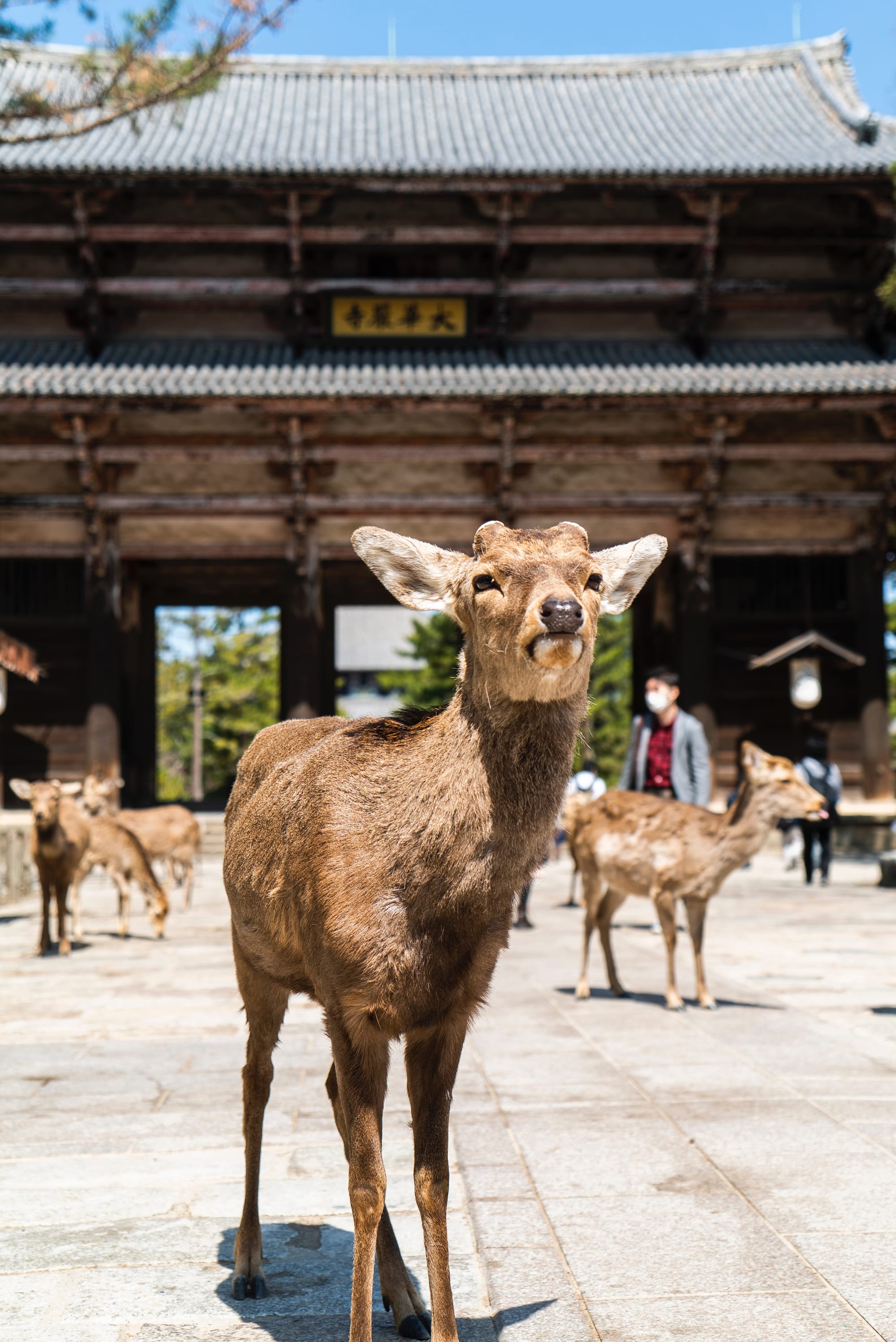

Photos by David Emrich (left) and Vladimir Haltakov (right) on Unsplash
Not so far from Kyoto and Osaka, Nara is a great stop if you want to experience being surrounded by deers in the middle of the city, and if you are interested in visiting a couple of additional remarkable temples. The city is one of superlatives:
- The main building (Daibutsu-den) of the Todai-ji temple, which hosts one of the largest bronze statues of Buddha in the world, is the world's largest wooden building. The temple and its park are magnificent.
- The main elements of the Horyu-ji temple (its main building, the pagoda and the main gate) from the 6th century, are considered to be the world's oldest wooden constructions.
6. Osaka
Osaka is the second largest city in Japan, and also the nation's kitchen, a heaven for foodies who will find anything from street food to michelin-starred restaurants.
While the Osaka Castle is actually a beautiful landmark to visit, the most striking things about Osaka remain his iconic and vibrant retro neighborhoods like Dotonbori, or Shinsekai; and the food. So for this paragraph, we'll put a focus on some of the culinary items you should try while there:
- Okonomiyaki: sort of thick savory pancake with squid and vegetables. It is popular all over Japan but each city/region has its own version
- Takoyaki: round dough filled with octopus and dipped in a special sauce
- Kushi-katsu: meat and/or vegetables on skewers
- Omurice: an omelette filled with rice and topped with ketchup. Said to have originated in Osaka.
- Kitsune-udon: a type of udon with a deep-fried tofu topping
- Taiko-manju, ou imagawayaki: sweet dough with red beens
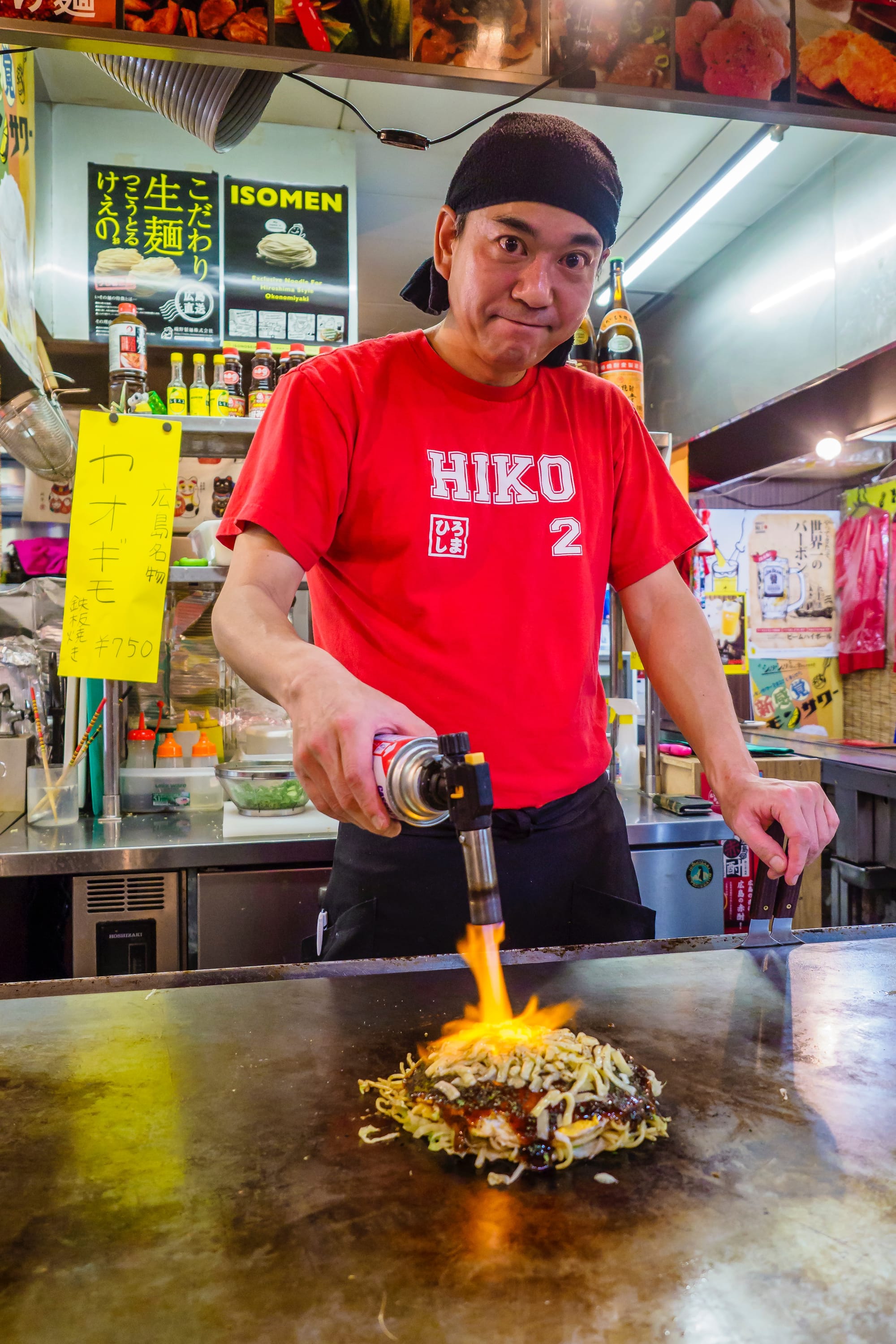
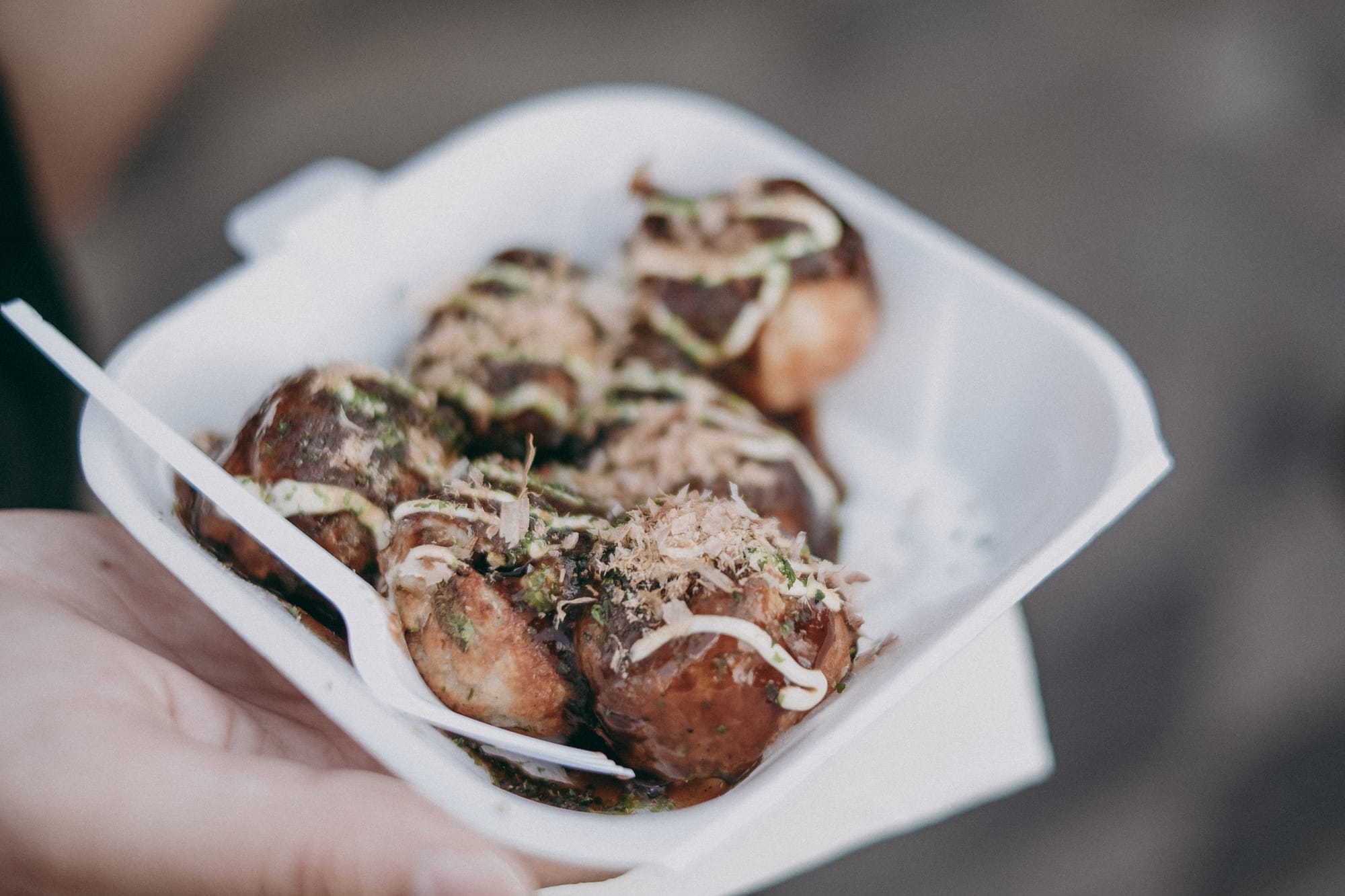
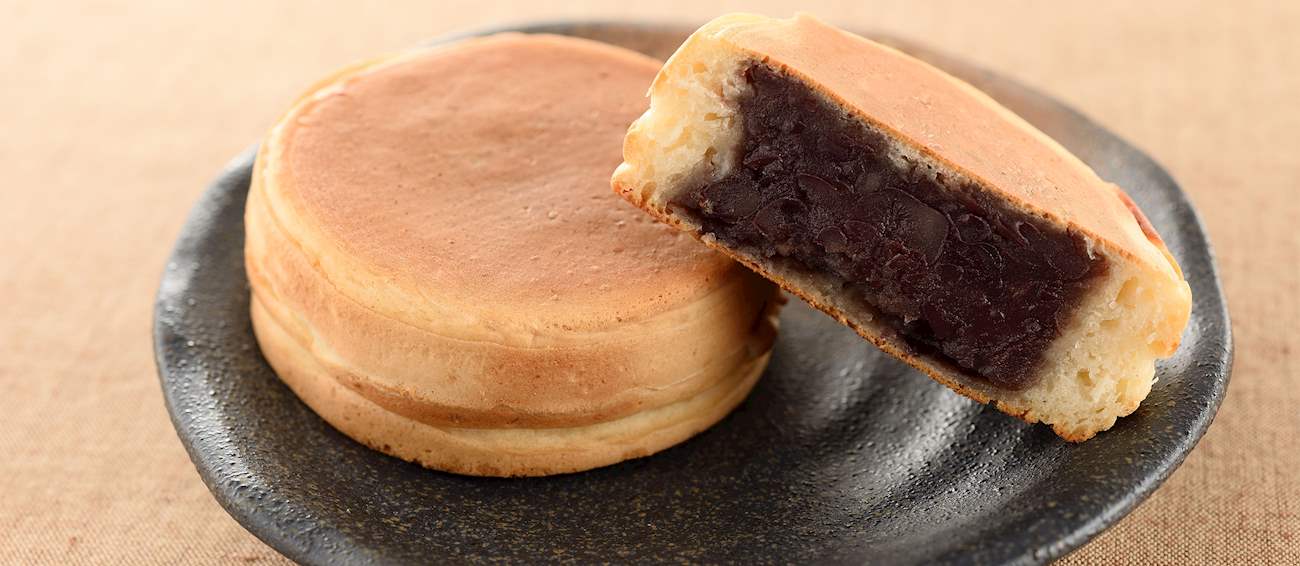
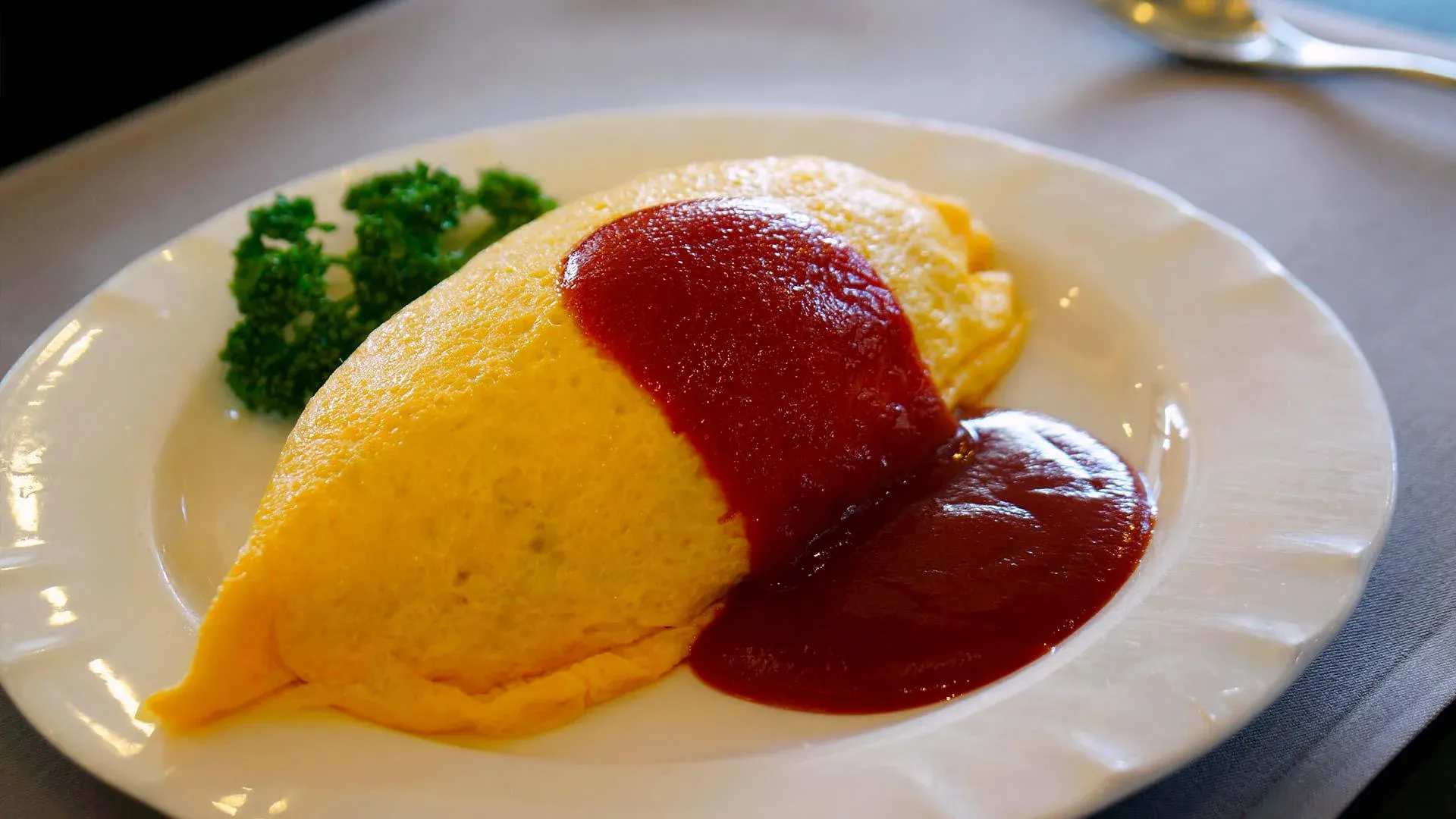
Credits: Alexander Schimmeck (top-left) and Brunno Tozzo (top-right) on Unsplash; Omurice (bottom-right) on byFood
If you are planning your trip, it is worth noting that Osaka will host the 2025 World Expo from April 13 to October 10, 2025.
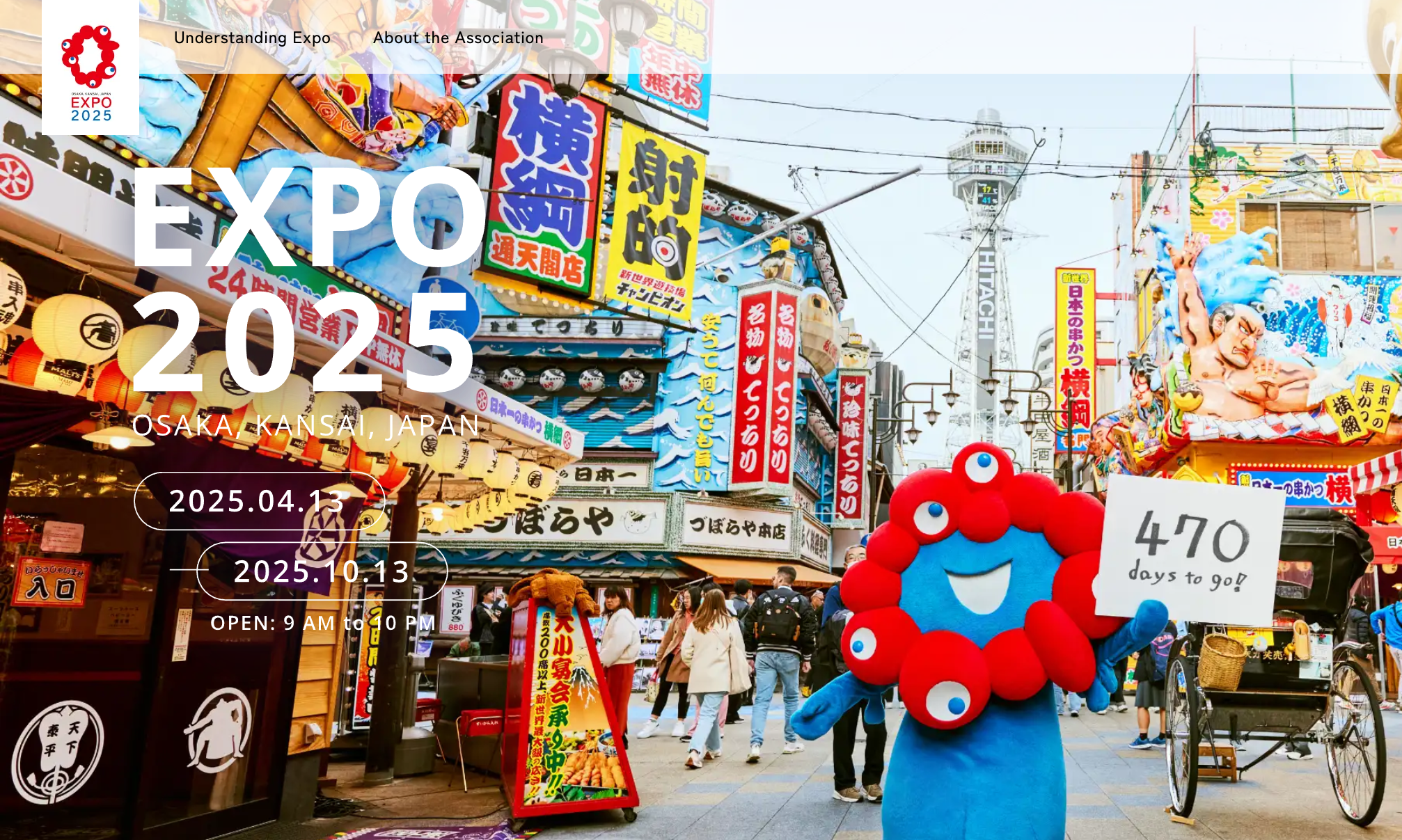
7. Naoshima
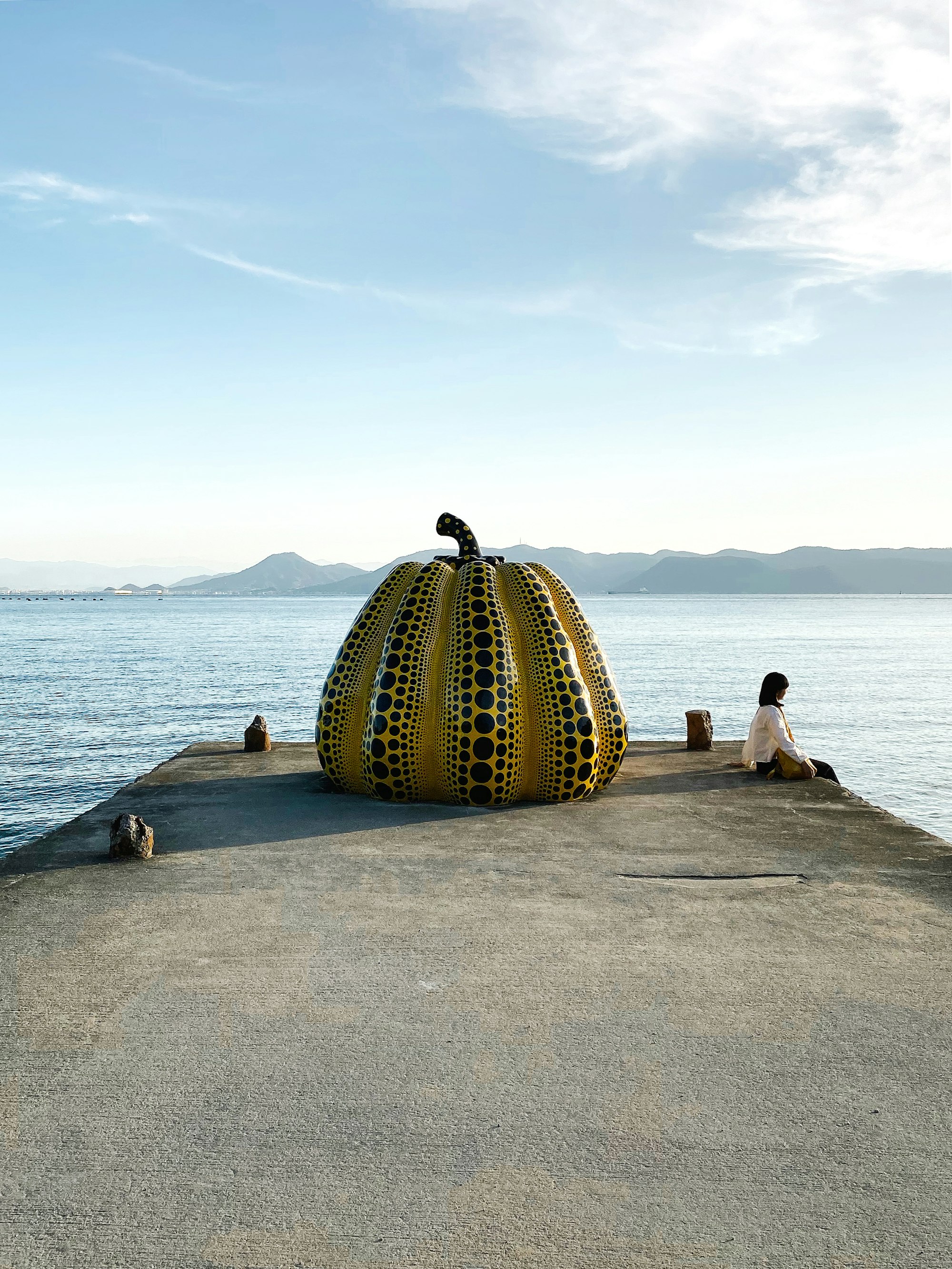
Between Osaka and Hiroshima lies the incredible island of Naoshima (whenever the name of a place ends with shima or jima, it is usually an island). The particularity of this island is that in addition to its sandy beaches and Mediterranean atmosphere, it is also an open-air contemporary art museum.
As it takes time to get there, it is recommended to spend the night on the island. Several options are available, but it can maybe be the opportunity for you to enjoy a night in a luxury hotel? If you do so, as my friend Tom says in French:
Là, t'es au max du max du max
Oh! And don't plan to go on a Monday. Museums are closed.
8. Hiroshima
Heading further south, a visit to Hiroshima holds deep emotional and historical significance not only for all Japanese people, but for anyone who visits the place. As you remember, Hiroshima was hit by one of the two atomic bombs towards the end of World War II, and was completely destroyed. A central part of visiting Hiroshima consists in paying tribute to the many innocents who lost their lives by visiting the Peace Memorial Park. Particularly striking is walking close to the Atomic Bomb Dome, which stands precisely as it was after their tragedy.

On a lighter note, I can recommend the Hiroshima-style okonomiyaki, which has noodles in it. Yummy !
9. Miyajima
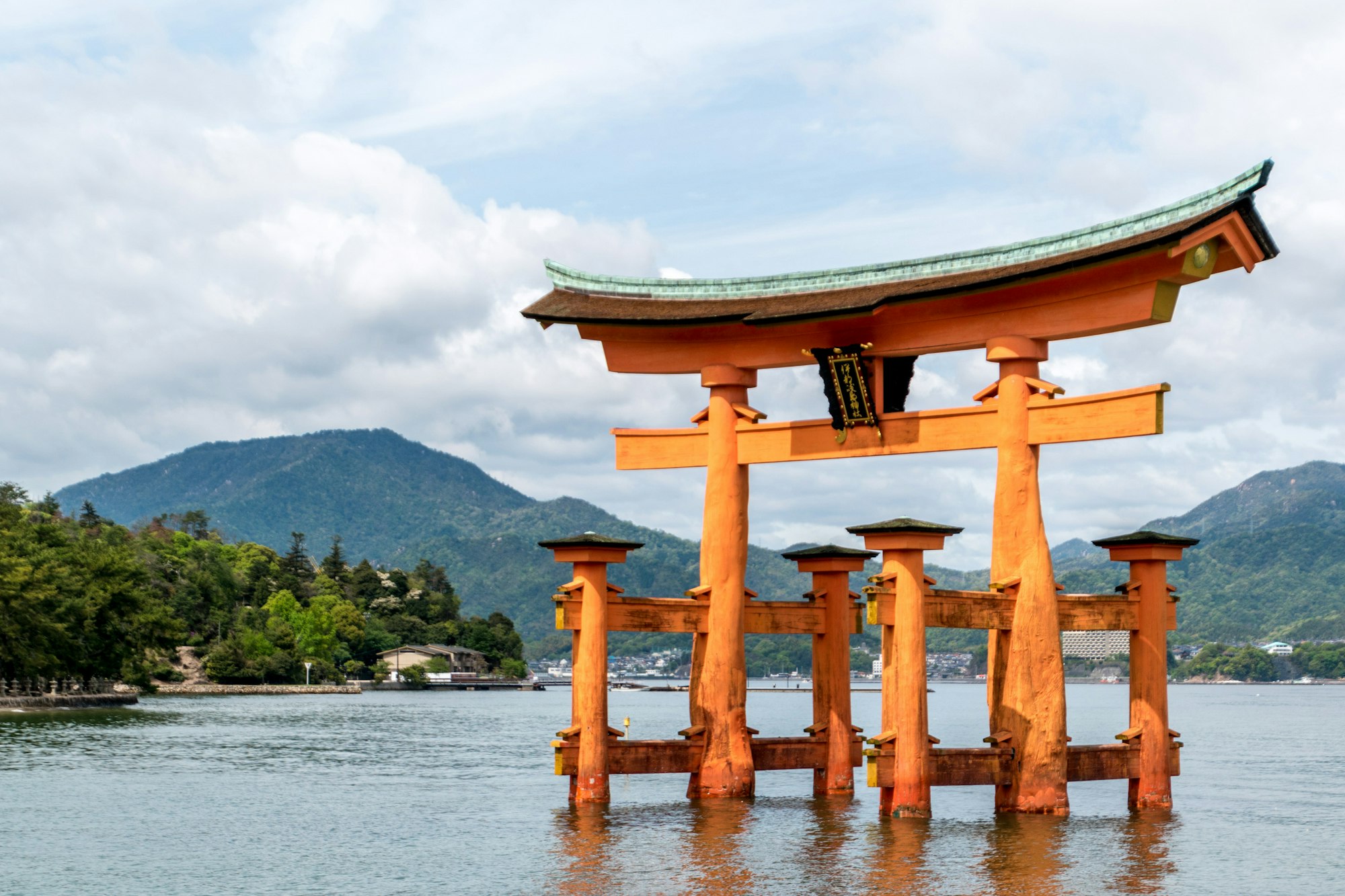
Miyajima is an island located a short distance south of Hiroshima and a ferry trip away. It was considered by a Confucianist from the Edo era as one of the three most scenic places in Japan (日本三景), and has certainly touched many people's hearts over centuries. I do not consider it myself as so hugely beautiful and important, but it does make it a nice day trip from Hiroshima: the ferry trip goes next to a beautiful semi-surmerged Torii (gate), there is a beautiful shrine and beautiful nature (forest, deers, mountain with view from the top, etc.). Consider it if you plan to go to Hiroshima and cannot plan much more during your trip.
Selection elsewhere in Japan
10. Okinawa

Several flights per day connect Tokyo Haneda and Okinawa, the subtropical Japanese archipelago located between Kyushu and Taiwan.
Okinawa and its multiple islands are famous for their stunning beaches, clear blue water, world-class resorts and golfs, and its cultural heritage and food which are quite different from the rest of Japan.
It takes a round trip by plane and is worth staying several days, so it may not fit in a short first trip to Japan, but Oninawa is definitely a stunning place to visit.
11. Nagano / Nozawa-onsen

The region of Nagano (Olympic City) which includes several good ski resorts like Nozawa Onsen, is a good option if you want to discover Japanese mountains, ski for a couple of days, and enjoy village atmosphere.
12. Shirakawa-Go

This cluster of small villages located in the Gifu Prefecture on the way towards Kanazawa, is part of the Unesco World Heritage list. It is characterized by its beautiful thatched roof houses. Your visit will likely last half a day only, but it is worth it.
13. Kanazawa
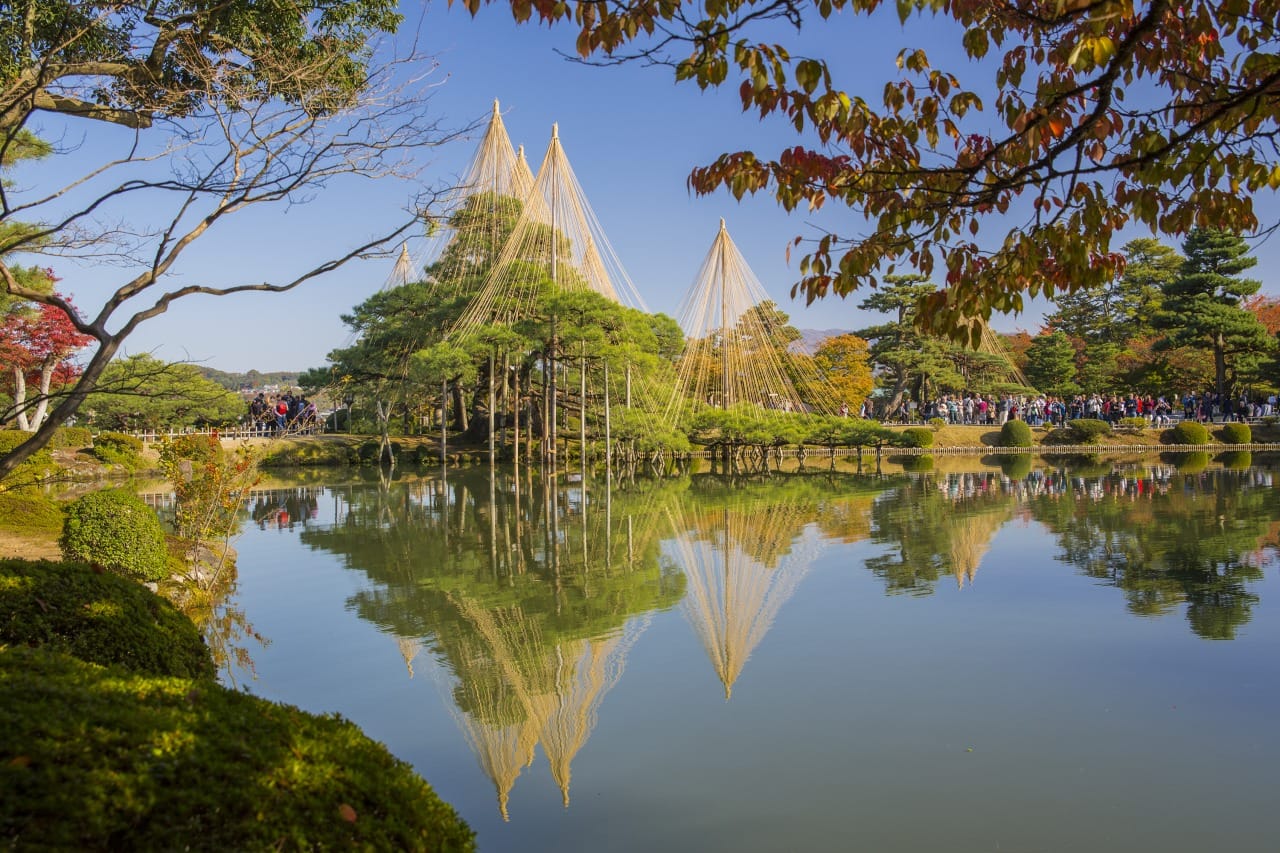
Kanazawa is like a little Kyoto, a middle-sized, culturally rich coastal city. It is mostly famous for three things: the Kenrokuen Garden (considered one of the three most beautiful parks in Japan), the Castle and its park, and the 21st Century Museum of Contemporary Art. Kanazawa also has its own old Geisha neighborhoods, and many artists of all kind (potery, etc.). Definitely recommended if it fits your plans.
For next times
Except for Okinawa, all the recommendations of this article are located in the main Japanese island of Honshu. The other islands all have their own treasures and are worth a visit. But precisely because of this, and as time basically passes at a different rythm than in the rest of Japan, each of the three other main islands are worth spending at least a whole week. For inspiration for your next trips to Japan, here are some words about each of them.
14. Hokkaido
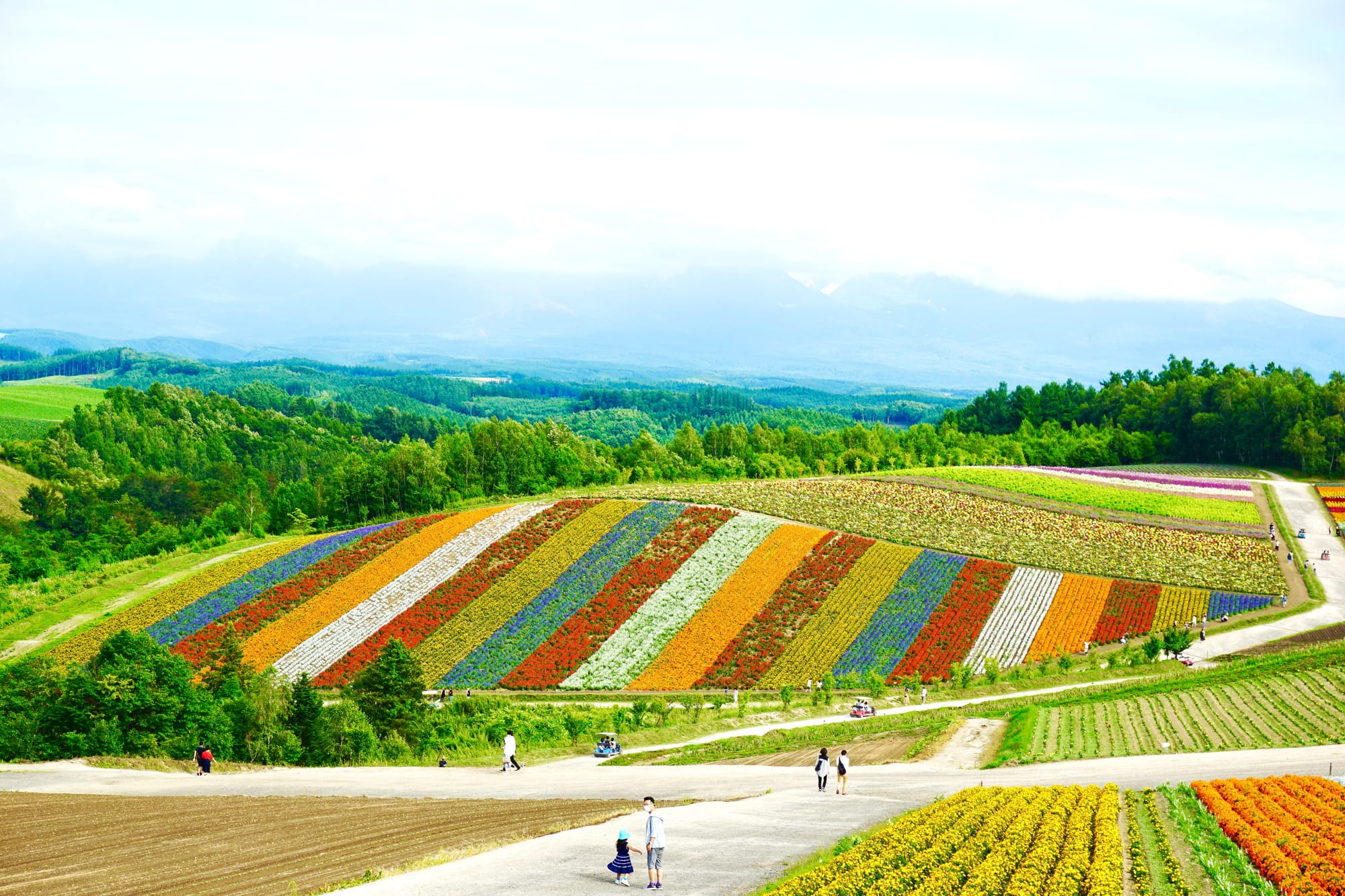

Credits: Lavender Fields (left) by Yuri Shirota on Unsplash; Sapporo Snow Festival (right)
Hokkaido is known in the whole of Asia as a premium ski destination. Its mountain, fauna and flora are beautiful.
- What can you see? Sapporo, the capital and fifth city in Japan, is a rather recent city, but is worth a visit including during its famous Snow Festival.
- Food: Hokkaido is also known for its beers and whisky productions (e.g. Nikka) and its higher consumption of lamb and sheep meet.
15. Shikoku
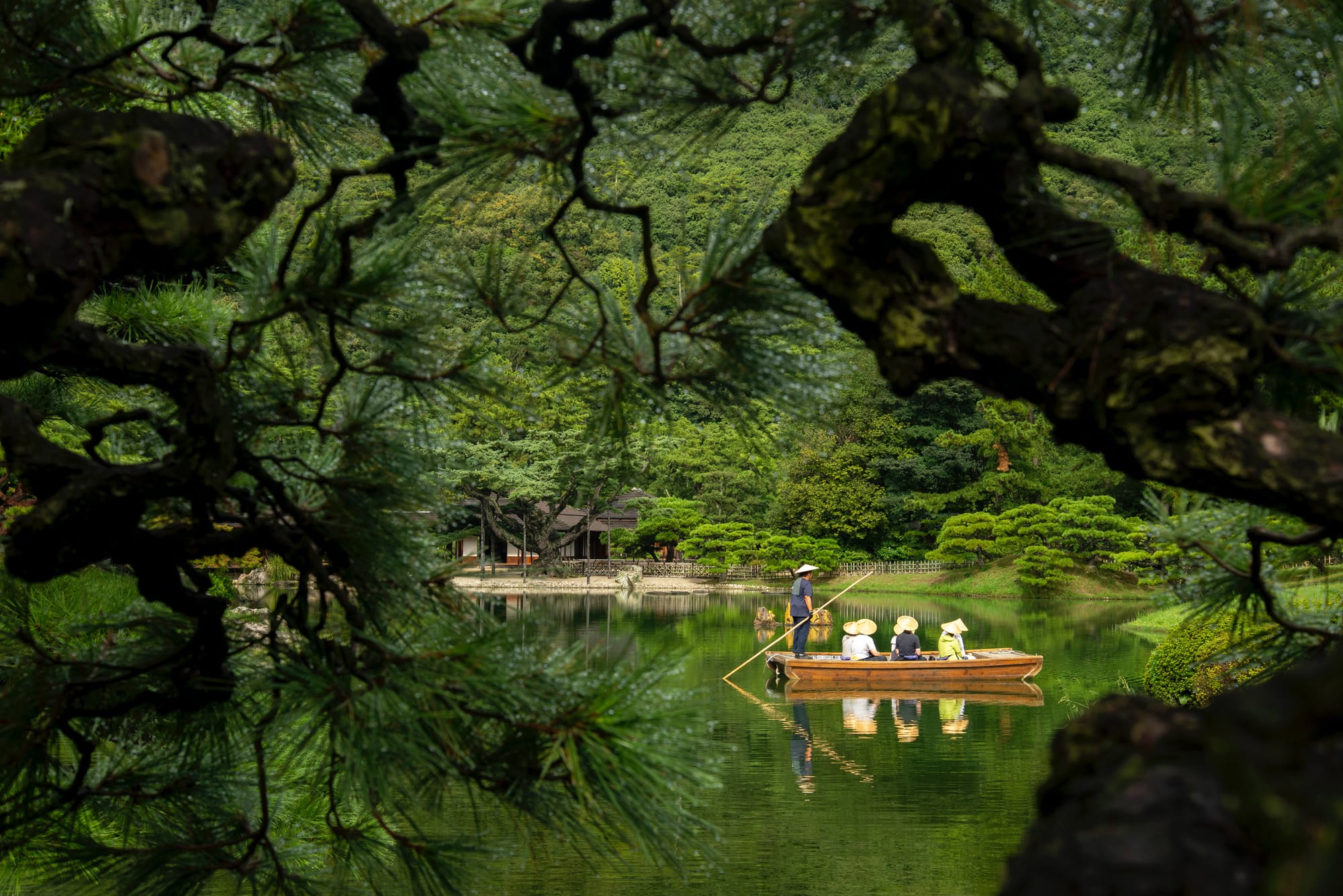
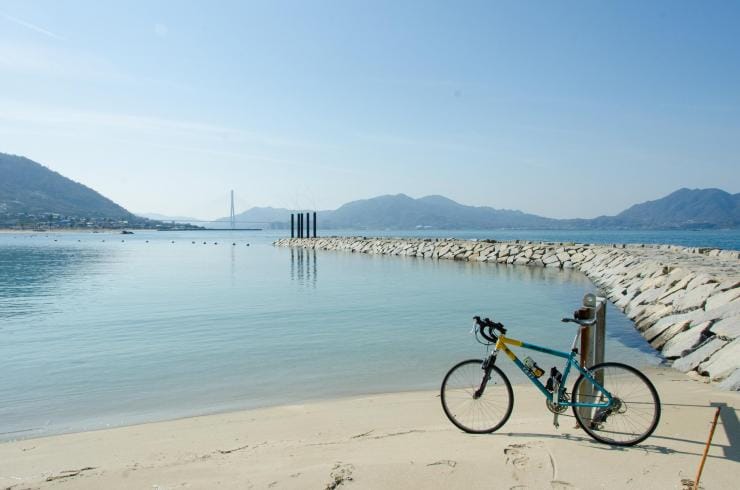
Ritsurin Park (left) Photo by H C on Unsplash; Shimanami Kaido (right) by Japan Experience
Shikoku is like a calm, traditional and wild island.
- What can you see or do? Shikoku has this famous 70km long cycling route called Shimanami Kaido, the Ritsurin Park that some consider to be the most beautiful in Japan, curious places like the Naruto and its huge whirlpool, and cascades.
- Food: The island has a different approach to food with more organic choices and specialties like oranges, and udon Noodles in the Kagawa region.
16. Kyushu

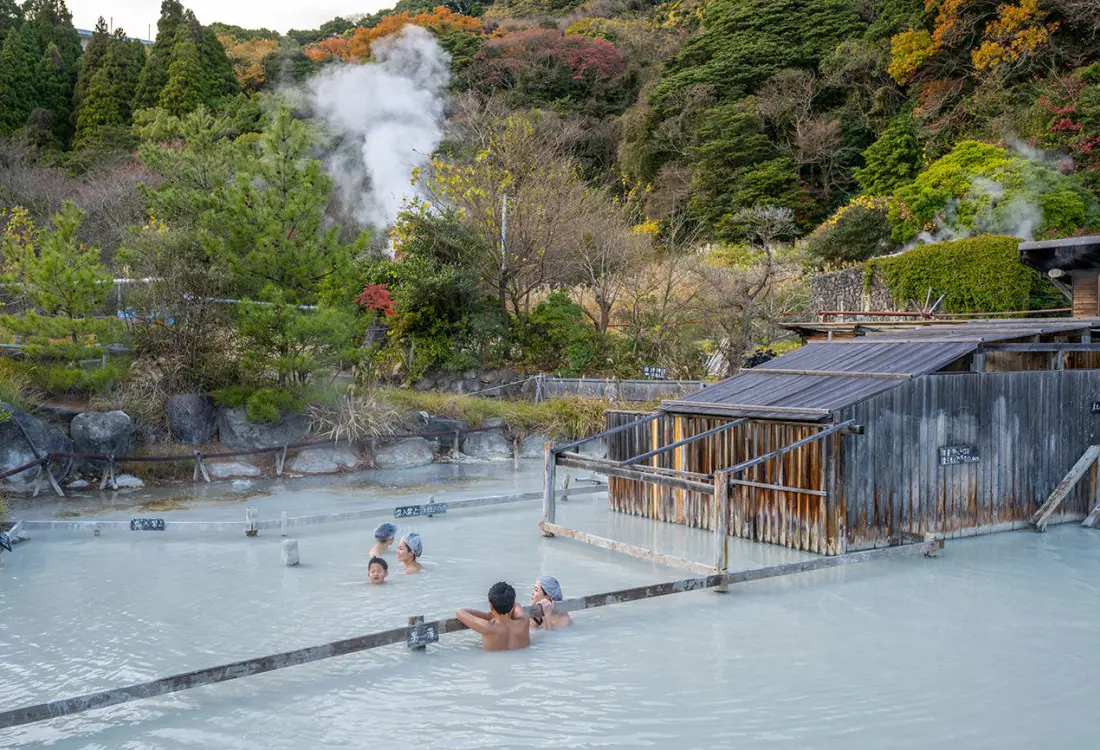
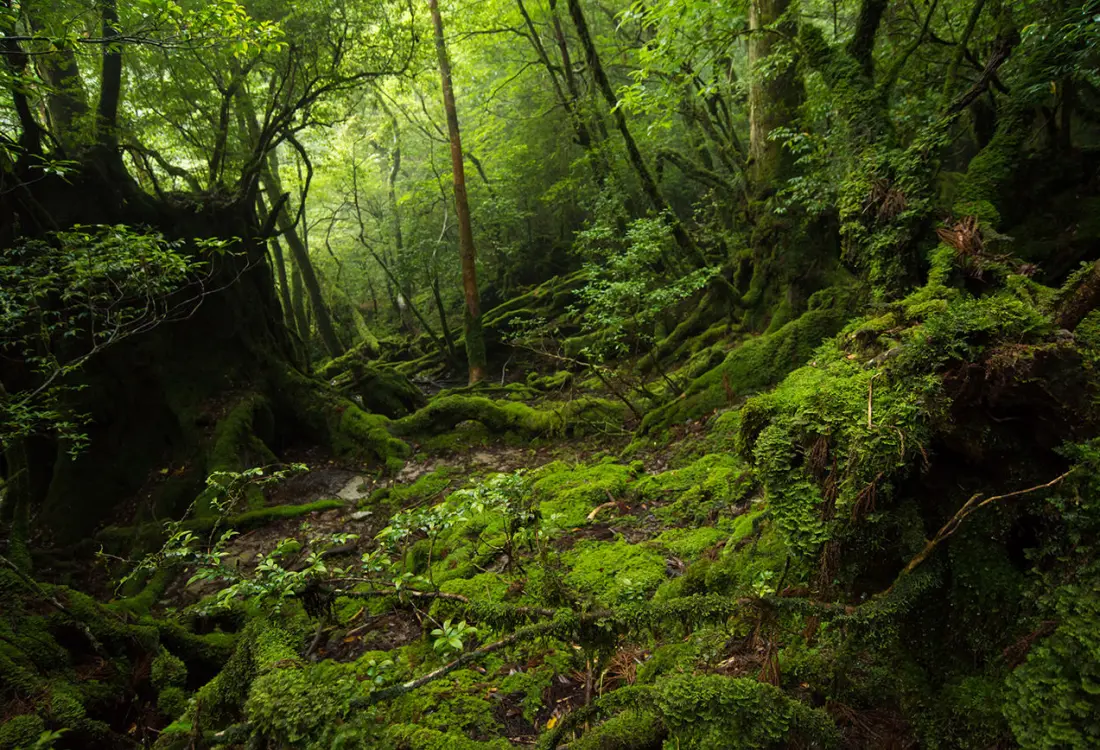
Credits: Sakurajima (left) on Voyage au Japon; Beppu Onsen (middle) and Yakushima (right) by Kyushu Tourism Association
Kyushu, the southernmost of the four main islands of Japan, has a luxurious subtropical nature and is an active volcano region.
- What can you see or do? Mount Aso, Sakurajima or other active volcanos are the promise of some nice hiking trips. The thermal area of Beppu has many onsens in a special environment. The Yakushima Forest is famous for its cedar trees that has inspired Princess Mononoke[6], some of them being more than 1000 years old.
- Food: Kyushu is known on the culinary side for its various types of Ramen (Hakata Ramen, Tonkotsu Ramen, Kumamoto Ramen, Hata Yakisoba, etc.).
Experiences
Food-related
Here are some additional food-related experiences not already described further up.
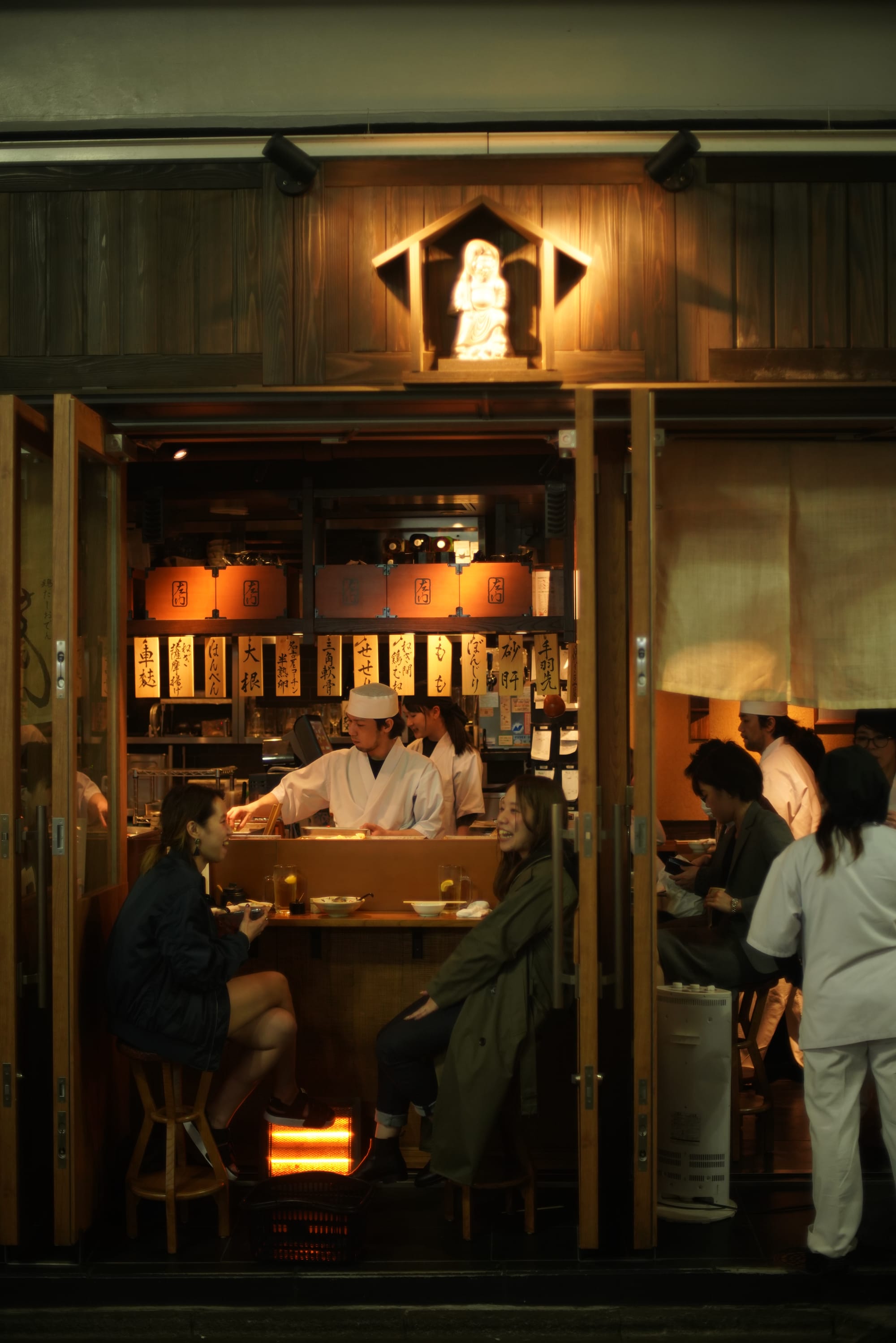

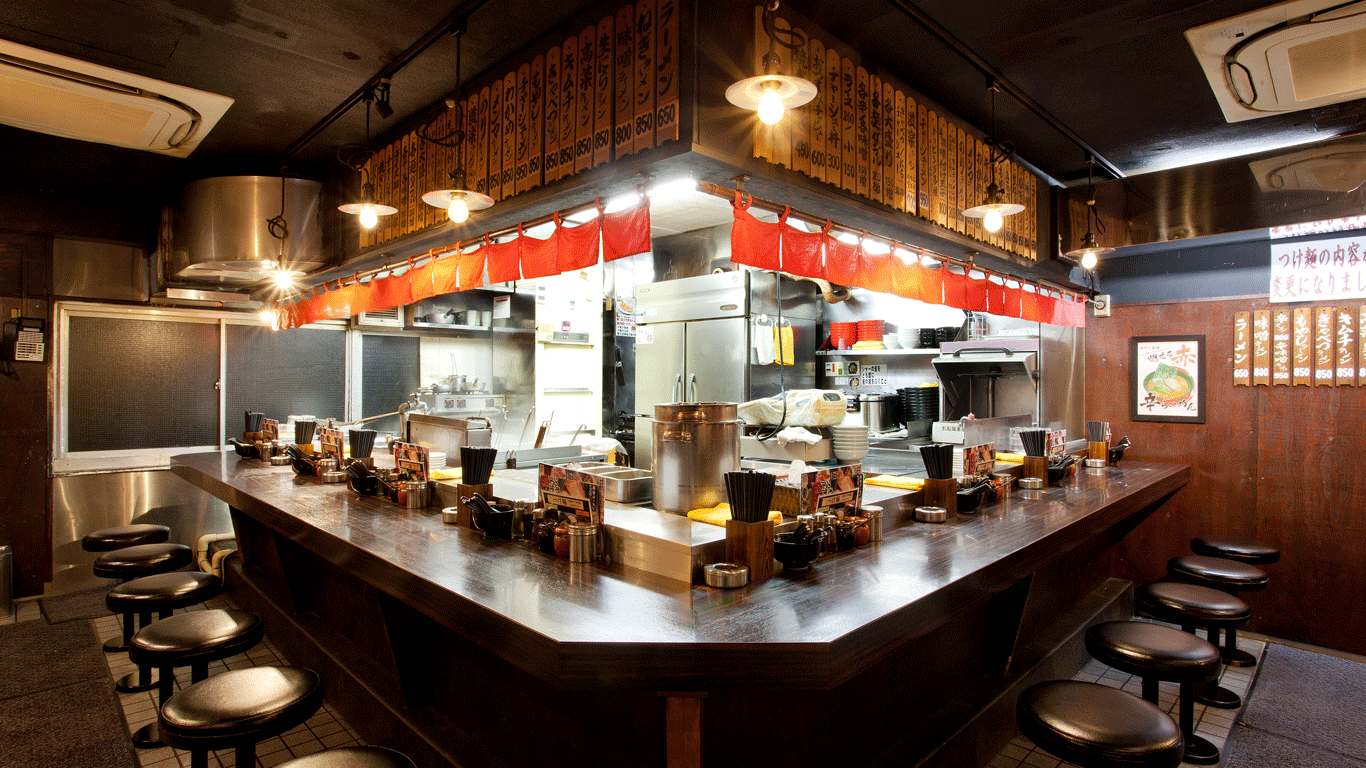
Izakaya (left) by Kris Sevinc on Unsplash; Gaado-shita (middle) by Yoshihiro on Unsplash; Ramen Restaurant Doraku (right) by Doraku Co., Ltd
- Izakaya: a type of informal, casual food and drink place, similar to a tapas bar, but completely Japanified. Really typical, with the menu hand-written on the wall made of small snacks that you eat with a good chop of beer. A must-try.
- Ramen restaurant: ordering at the machine, sitting at the counter, getting served in a couple of minutes, eating deliciously greasy noodles with a beer. Wonderful.
- Restaurants and bars under train tracks (gaado-shita): after the Second World War, tiny eating points opened everywhere they could with little money, like these places under train tracks. A very special atmosphere, for instance between the train stations of Yurakucho and Shinbashi in Tokyo.
Other
For inspiration, here are some typical Japanese experiences you may or may not want to include in your trip.
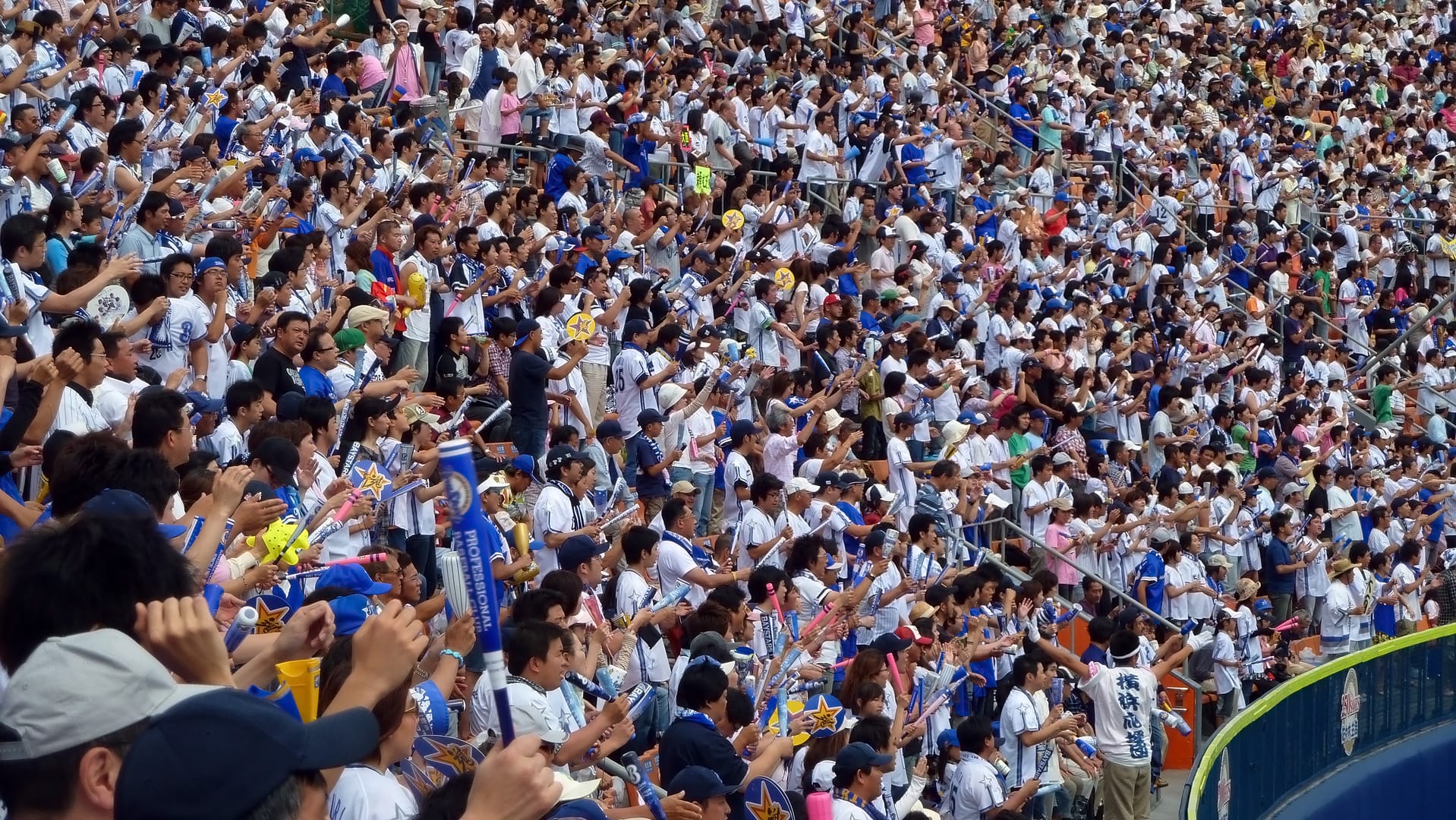
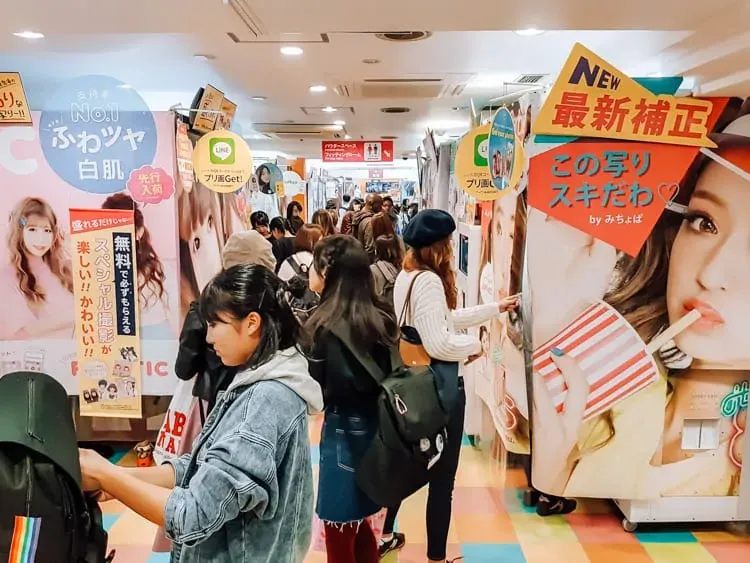
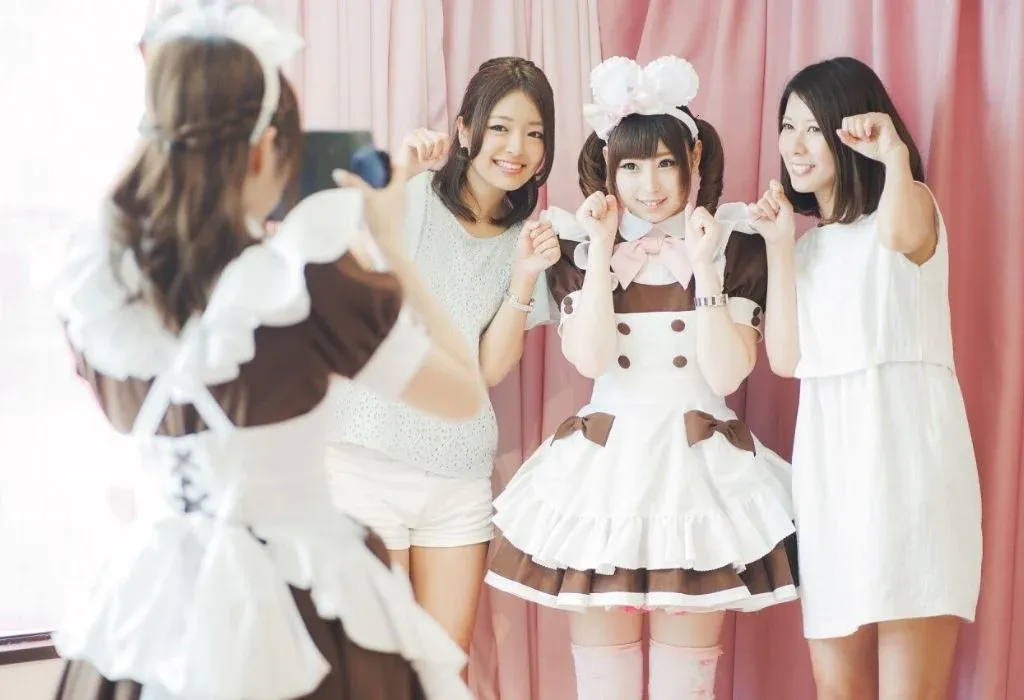
Yokohama Bay Star Fans (left) on TravelJapanBlog.com; Purikura no Mecca (middle) by Christine Abroad; Customers taking a picture in a maid cafe on Univers du Japon
- Animal cafes: it became very popular in Japan to have a coffee surounded by cute animals. It started with cats, but there is now a huge variety of such places, with hedgehogs, piglets, etc.
- Don-quijote: a chain of discount stores in Japan which sell litterally everything, including some very fun costumes or toys.
- Karaoke: the legendary singalong entertainment is a really fun experience to have on a night out in a big city. For instance at Karaoke Kan in Shibuya. Most have super nice campaigns with all-you-can-drink options.
- Purikura (Shibuya): fun Japanese photo booths, where you typically go with friends or with a partner to make some fun souvenir photos with lots of over-the-top filters and effects. You will find a lot in Harajuku for instance, like at Purikura no Mecca.
- Love Hotel: as many young Japanese live at their parents and don't get a lot of intimacy, and as many people live far from activity centers, love hotels became populars as a place for short-stays with a lot of differently themed rooms with the primary purpose of allowing guests privacy for adult gymnastics. Some as rather cheap or gloomy, but some are really fun and well made. If you're comfortable with this sort of (very safe) out-of-the-ordinary experience, try one 😋
- Maid cafes: a completely crazy concept of cafes where you're welcomed and served by waitresses dressed as maids which remind of the anime world. There's no sexual aspect to it (it's actually strictly forbidden), and customers are of all kinds (we're far from the otaku-only clientele): you basically come and pay to have a drink and good time (take a picture with the girls, sing silly songs when you receive your drink, etc.) in a very cute environment. There are different kinds of cafes, it would be worth a whole article. You'll find many of them in Akihabara.
- Onsen: Japanese hot spring bath. The ultimate experience for me was in Kusatsu Onsen: very traditional baths and a whole village dedicated to the soothing properties of the water flowing through it.
- Sumo: Japanese traditional wrestling where the wrestlers are considered as half-gods. A must-see experience if you're into sports and performance.
- Baseball: the country's #1 sports, popularized by the American occupation after the Second World War. The Japanese have a more dynamic, cheerful way of supporting their teams during games. Tokyo has two teams, the Yomiuri Giants, and the Yakult Swallows, whose caps are quite popular 😊
- Vending machines: you'll see them everywhere and will likely buy some refreshments after a long day of walking around. Try different things !
- Simulators of all kinds: baseball, golf, rowing, etc.
- Hatobus: bus company offering day trips within Tokyo and outside of Tokyo in their yellow bus. Many destinations and a nicely organized system.
Afterwords
This article was finally finalized and published during Christmas 2023, after staying for months in a draft state. I rushed it a bit to finish it so it may contain errors or incoherences. Feel free to comment below or contact me with thoughts and suggestions 😊
References
- [1] The Economist Intelligence Unit (2023), Worlwide Cost of Living 2022, https://pages.eiu.com/rs/753-RIQ-438/images/WCOL-2023-summary-report.pdf
- [2] Japan Travel (2019), JR Rail Pass Calculator - Save cost on your trip, https://japantravel.navitime.com/en/area/jp/guide/NTJhowto0081-en/
- [3] Tokyo Metro (2023), Regular Tickets/Coupon Tickets, https://www.tokyometro.jp/en/ticket/regular/index.html
- [4] Japan Travel (2020), Tokyo Taxi: A perfect guide to using a taxi in Tokyo, https://japantravel.navitime.com/en/area/jp/guide/NTJhowto0061-en/
- [5] xe.com, Euro to Japanese Yen Exchange Rate Chart (10Y), https://www.xe.com/currencycharts/?from=EUR&to=JPY&view=10Y
- [6] NYTimes (2018), A Real-life enchanted forest, https://www.nytimes.com/2018/05/17/t-magazine/yakushima-japan-hayao-miyazaki-princess-mononoke.html
